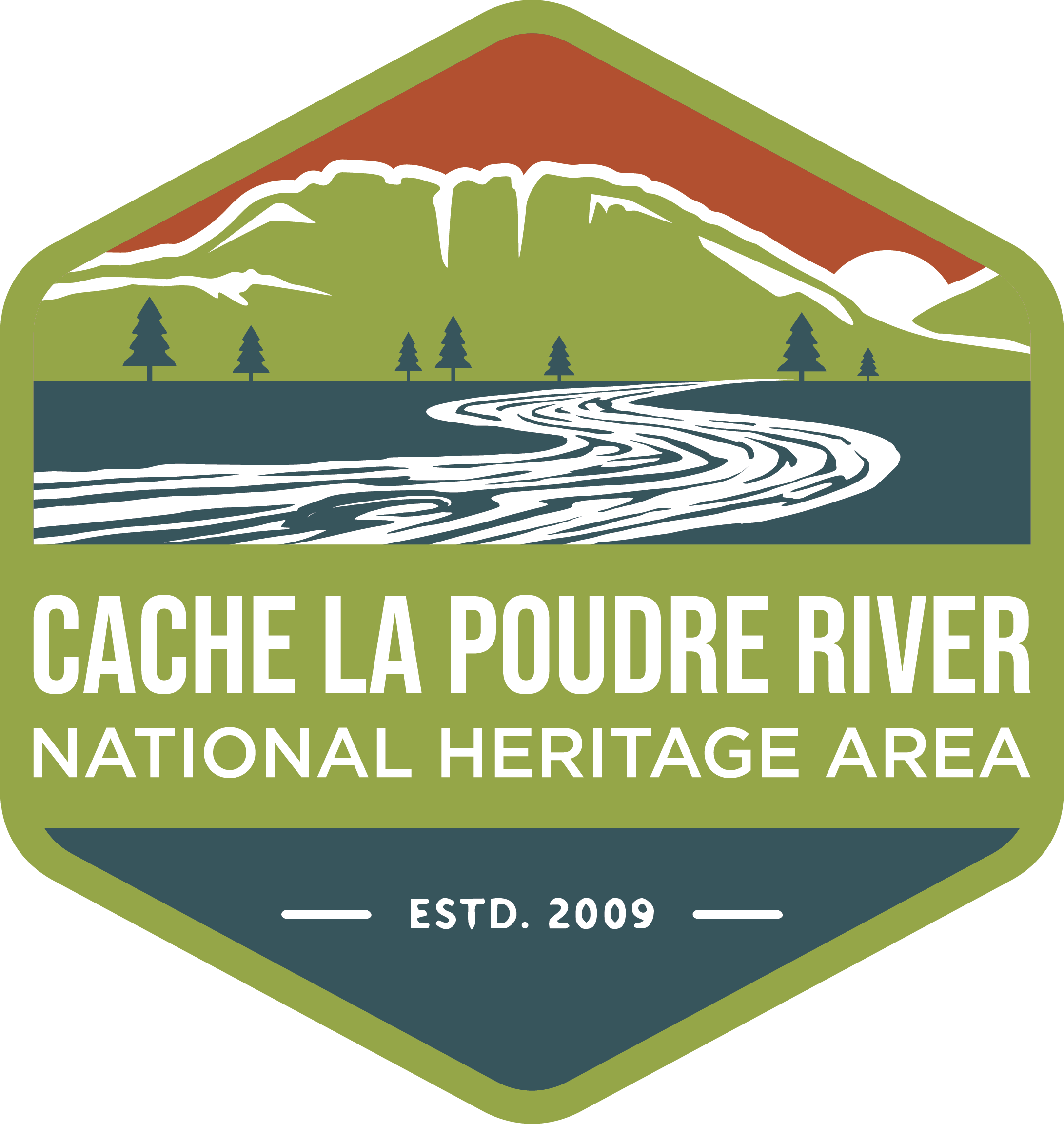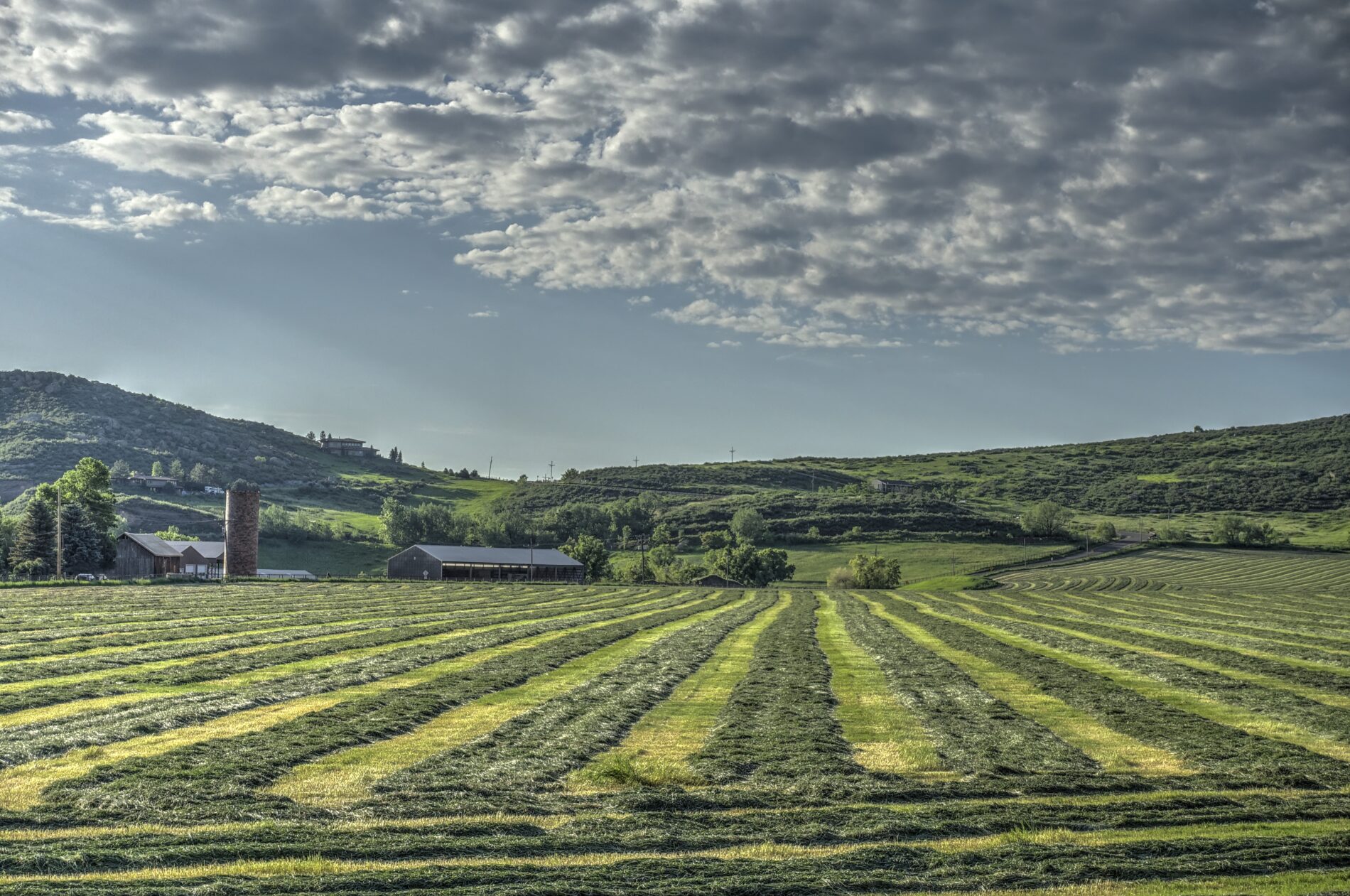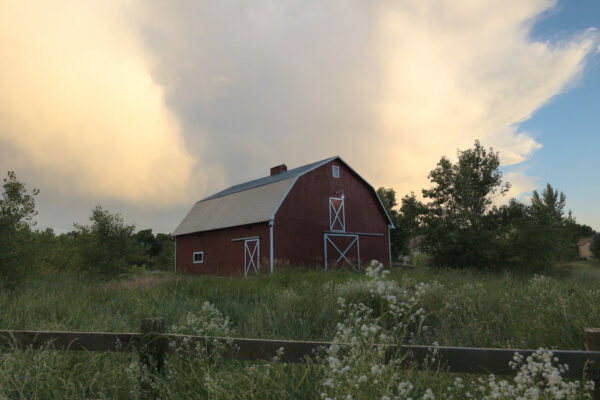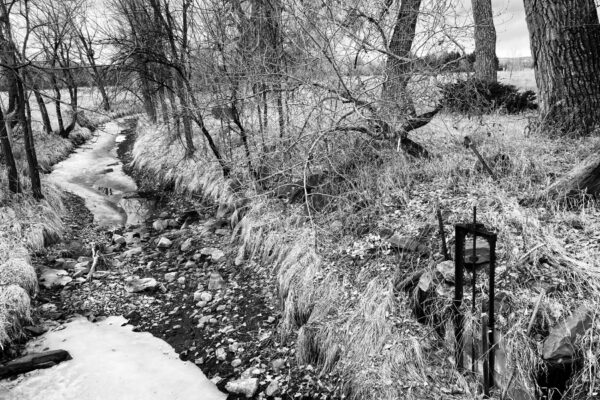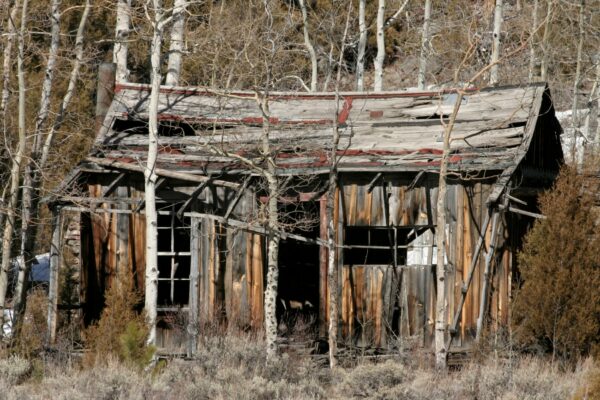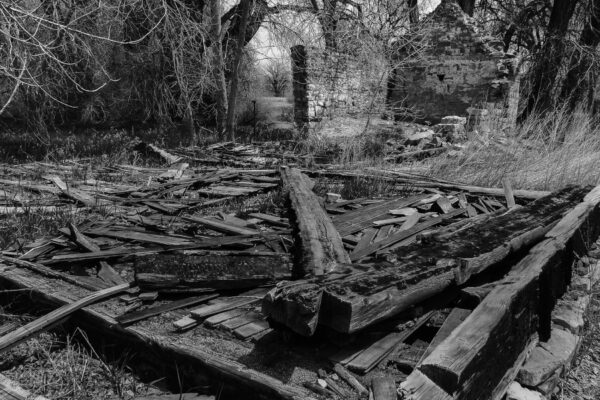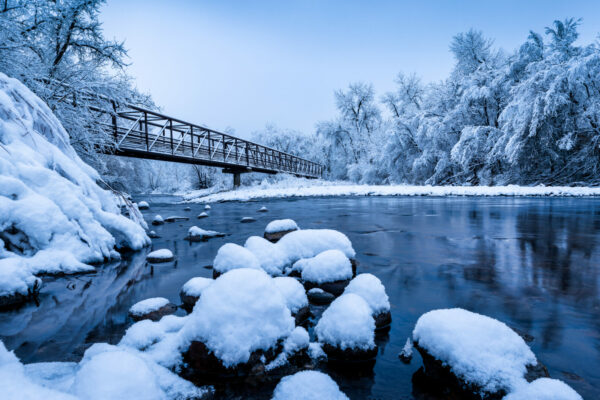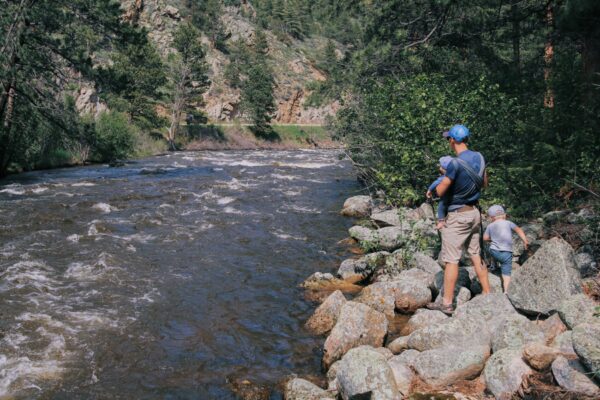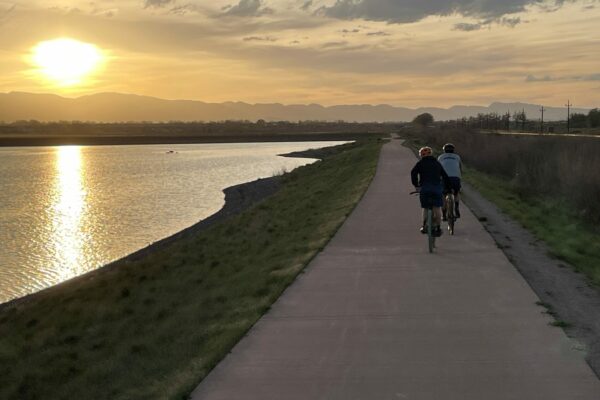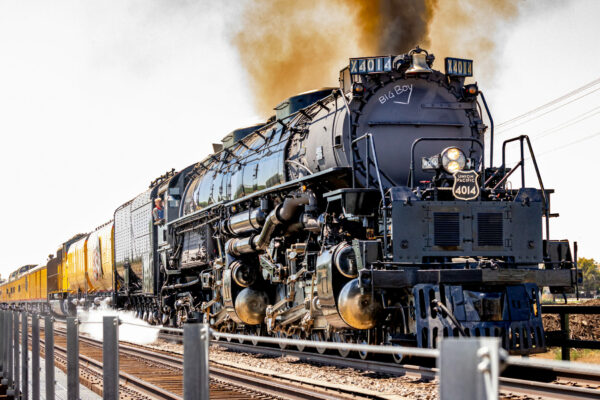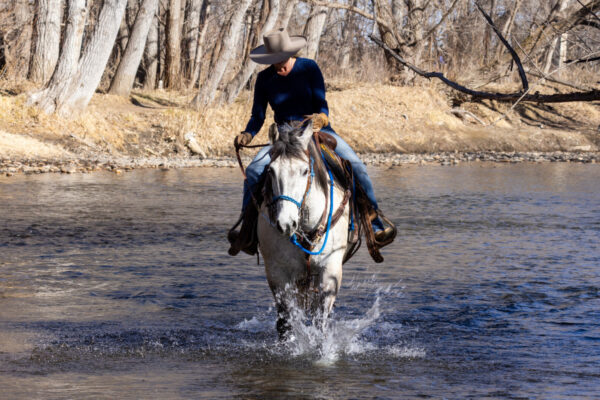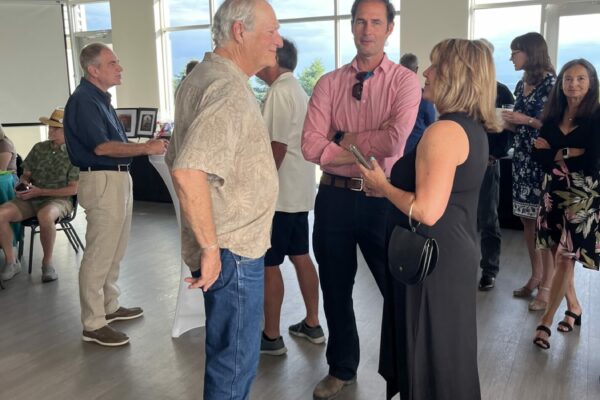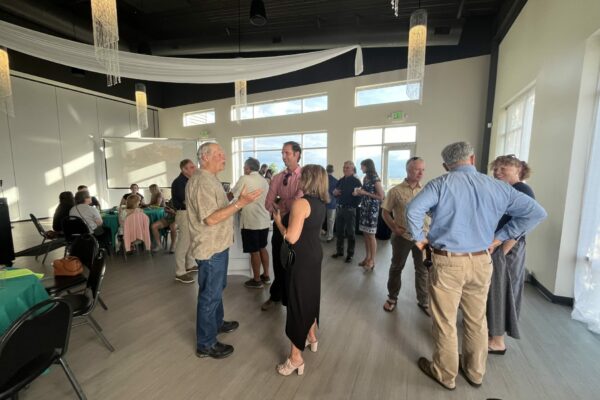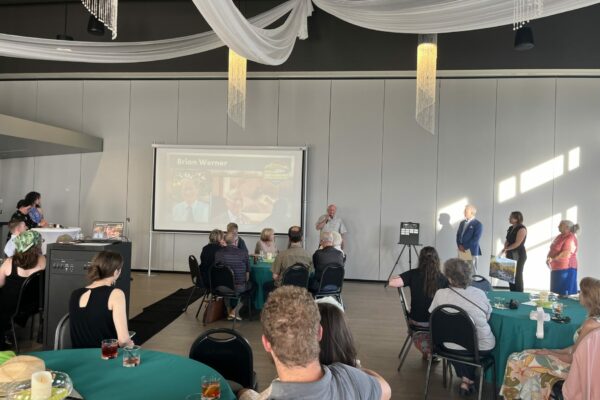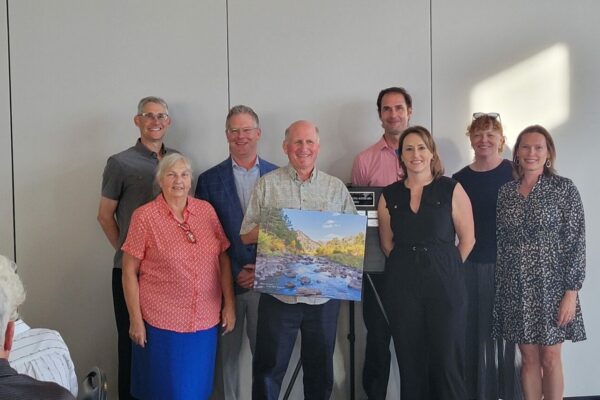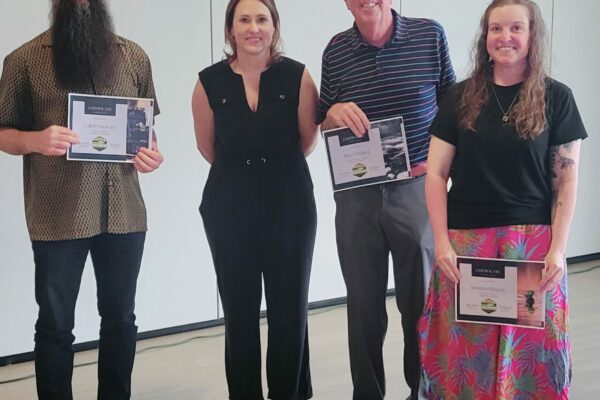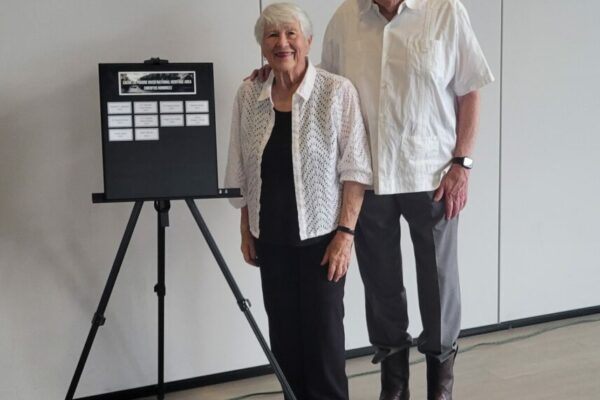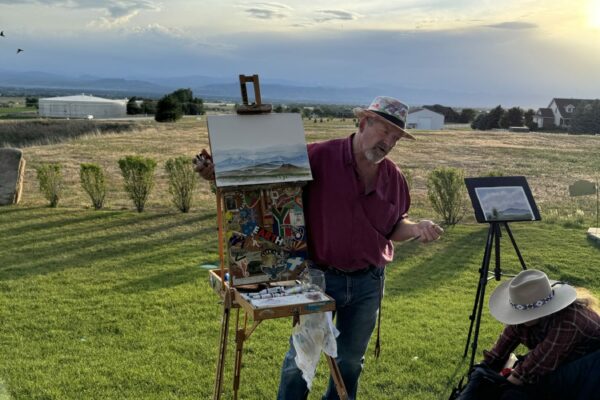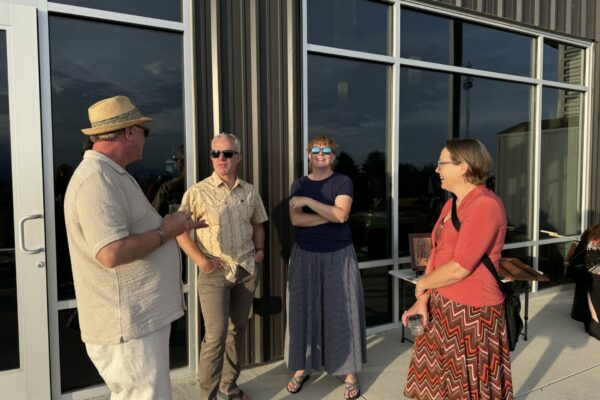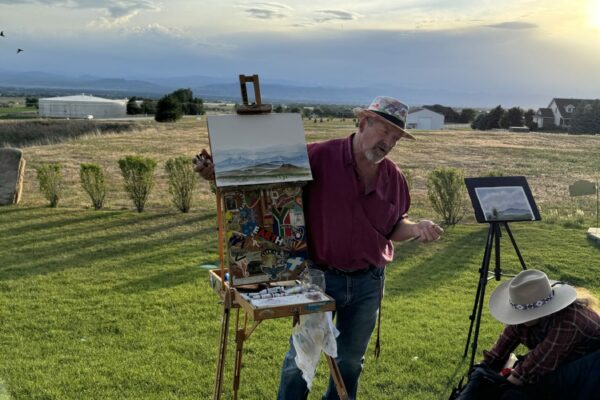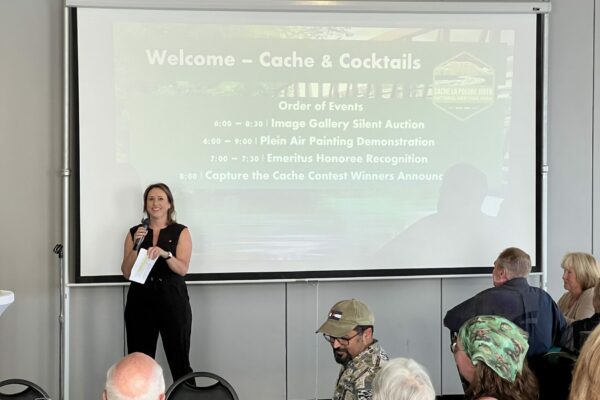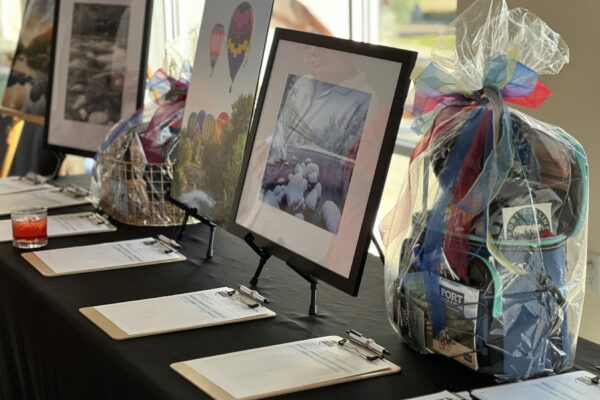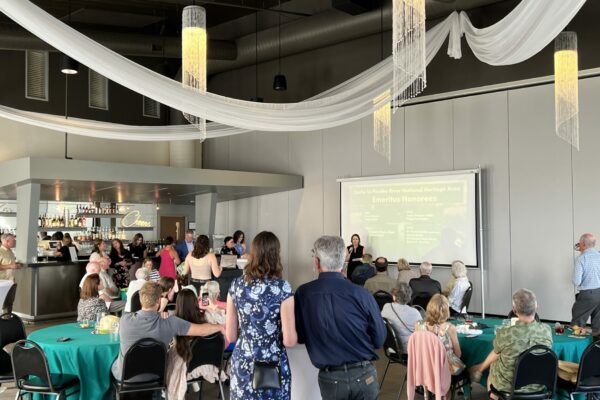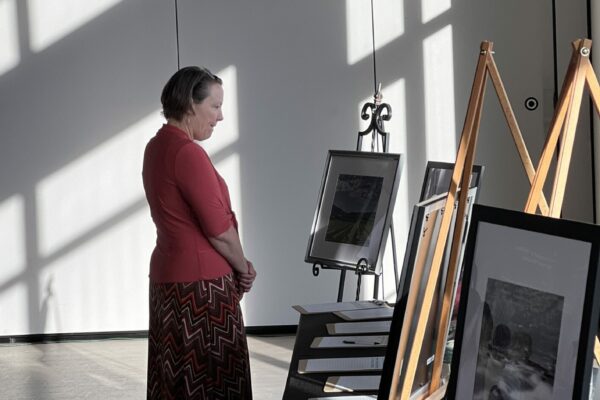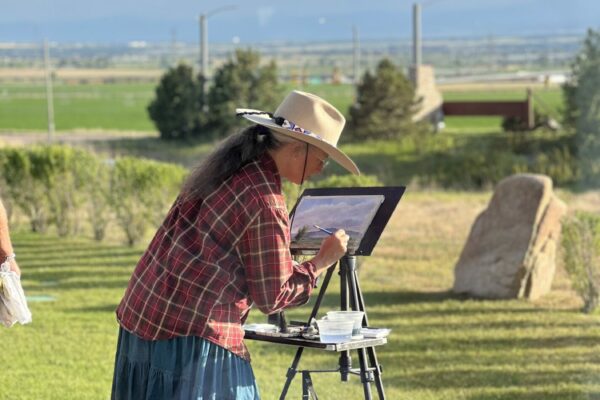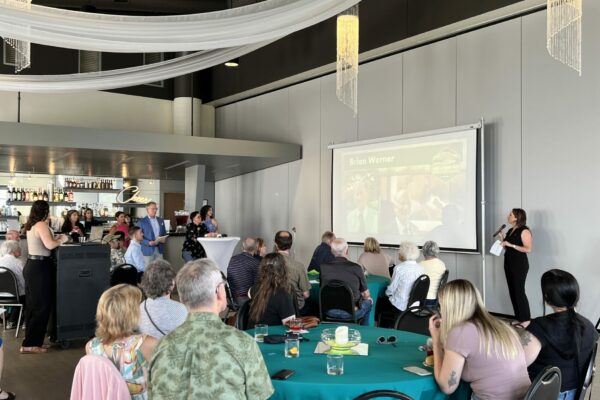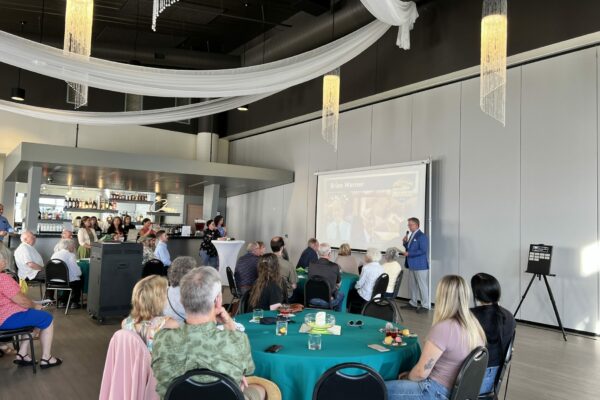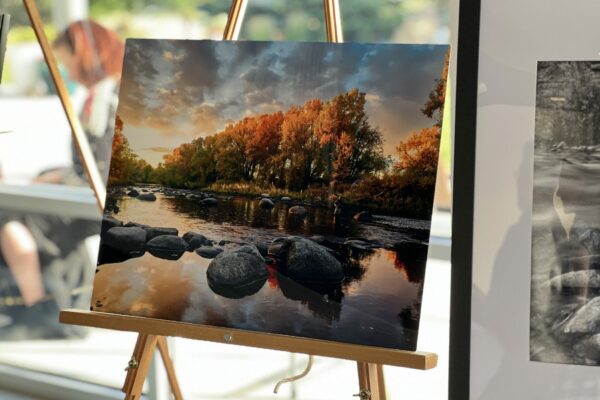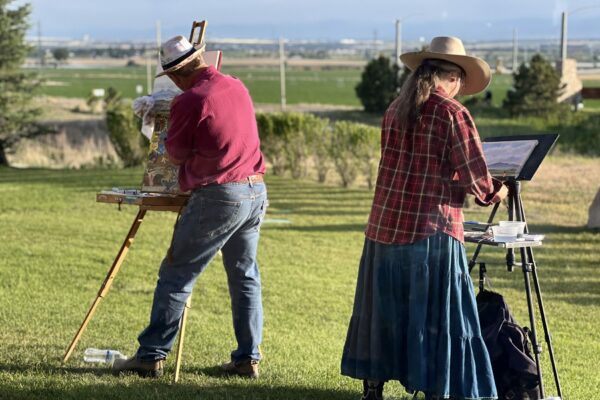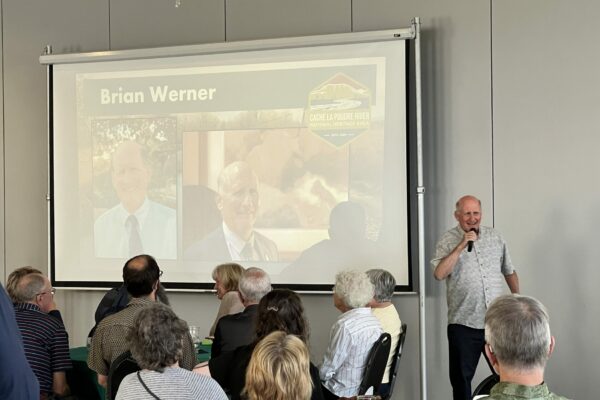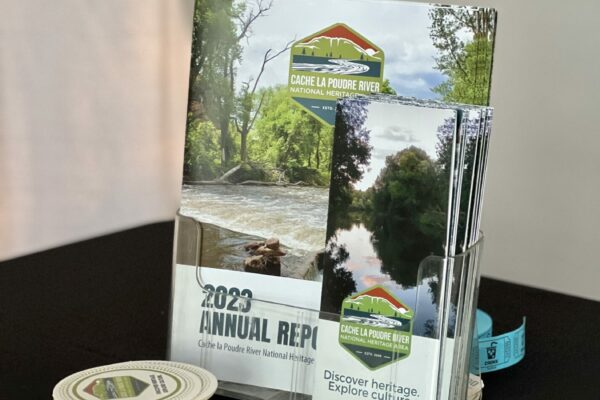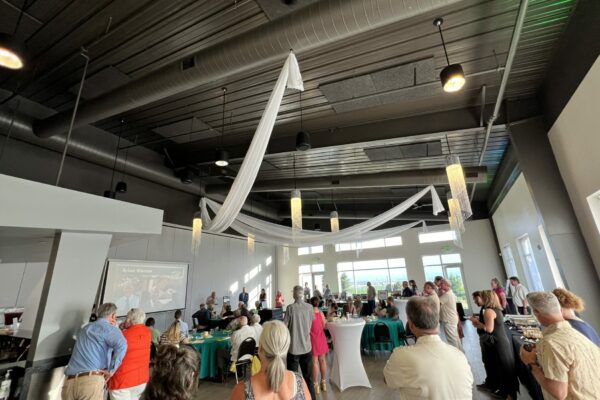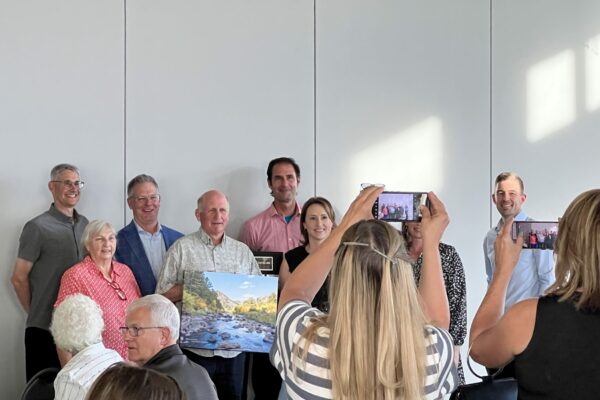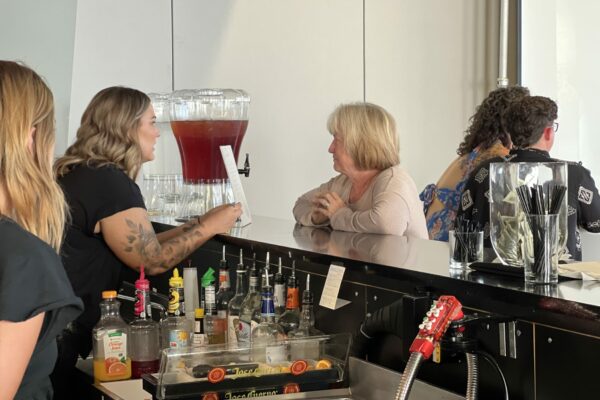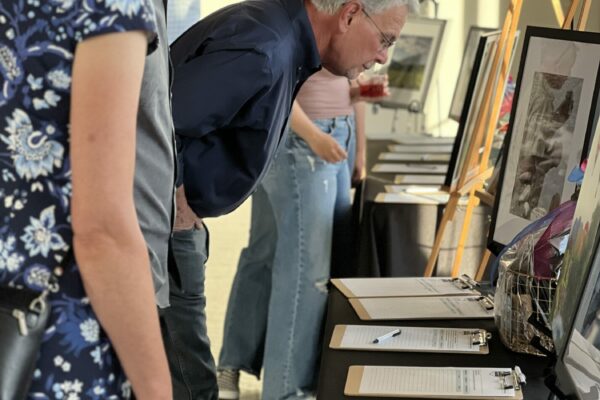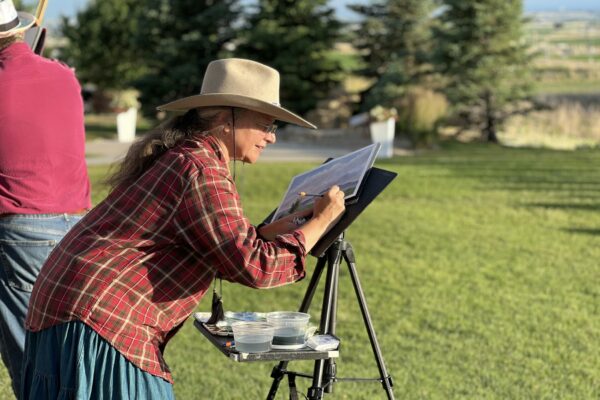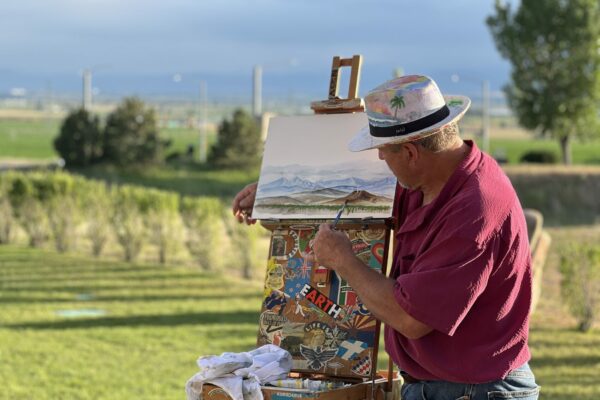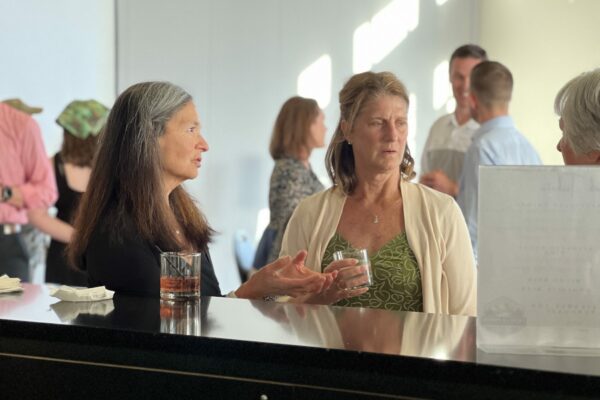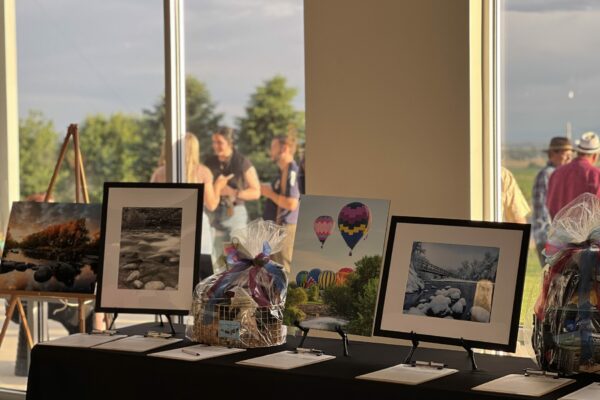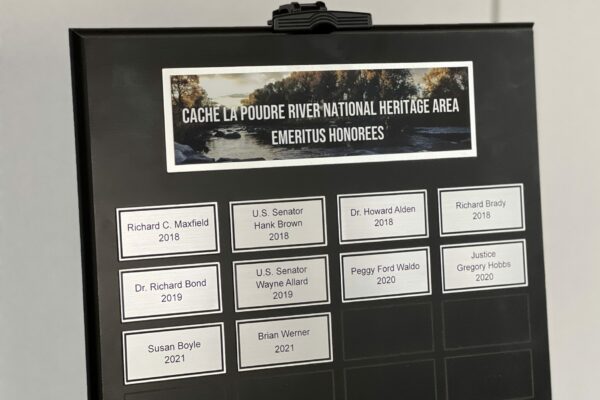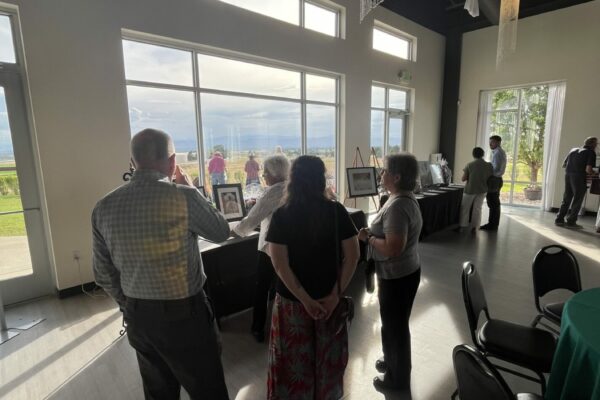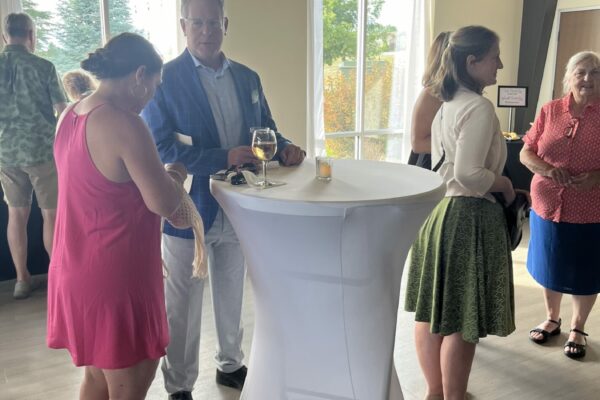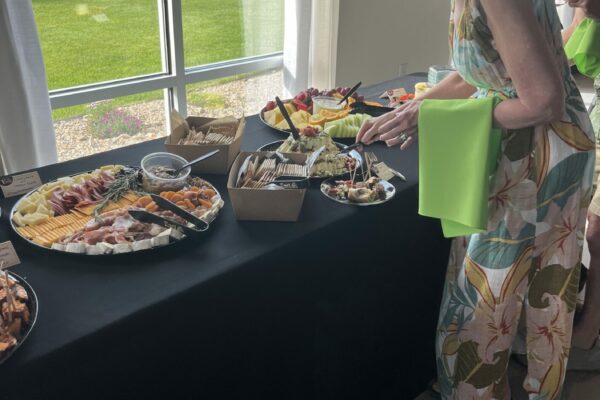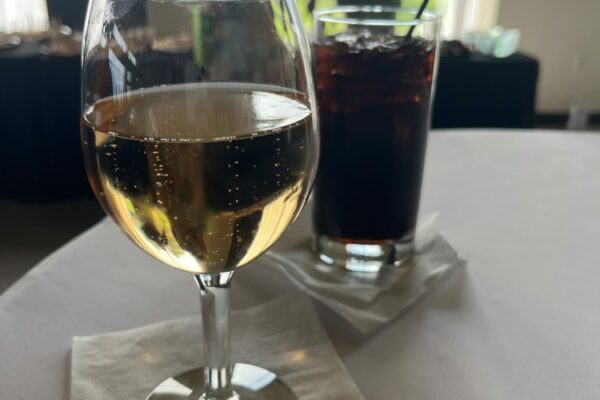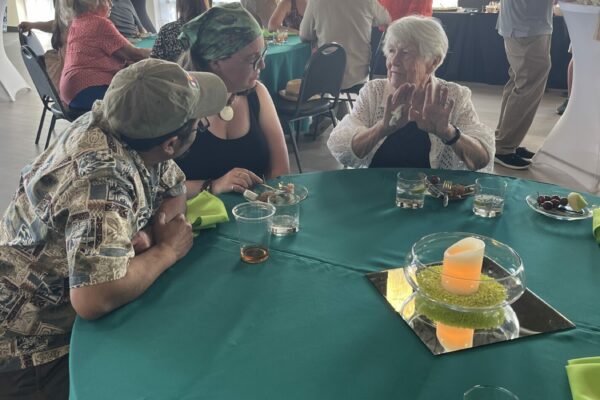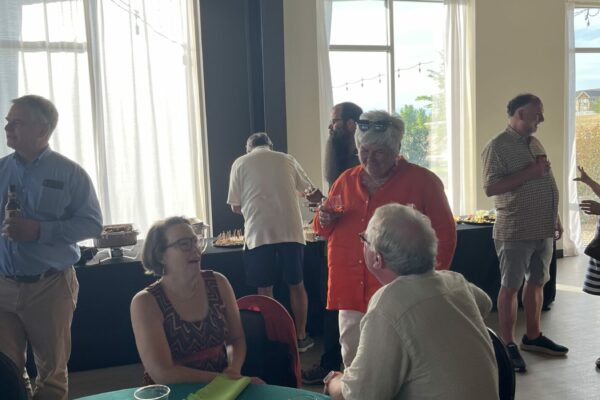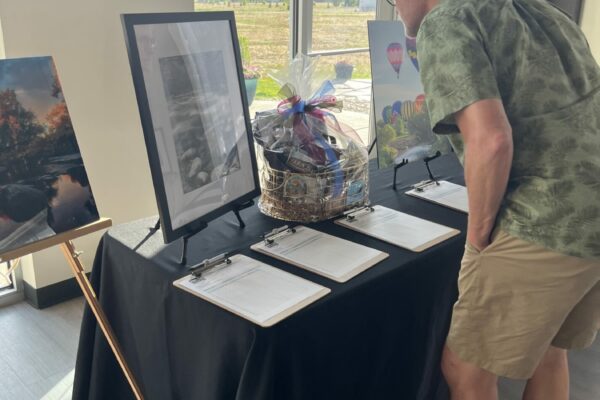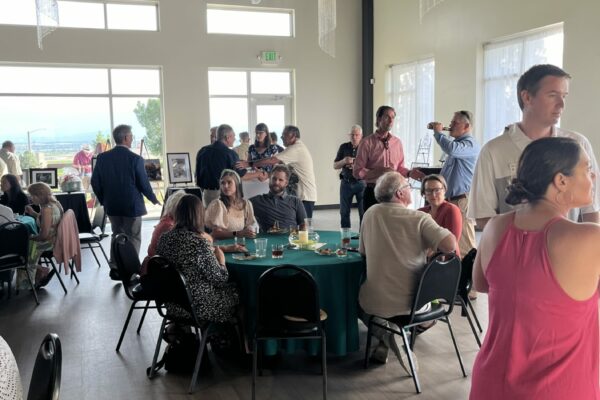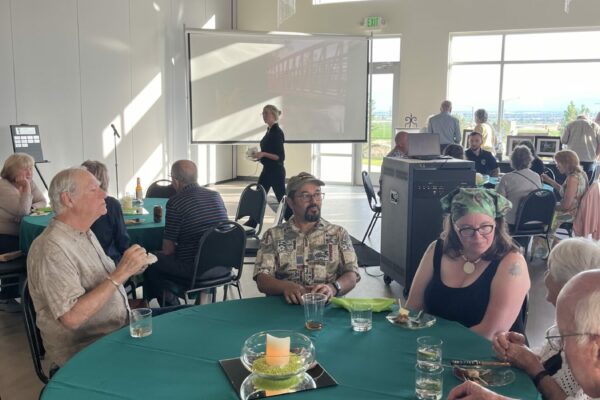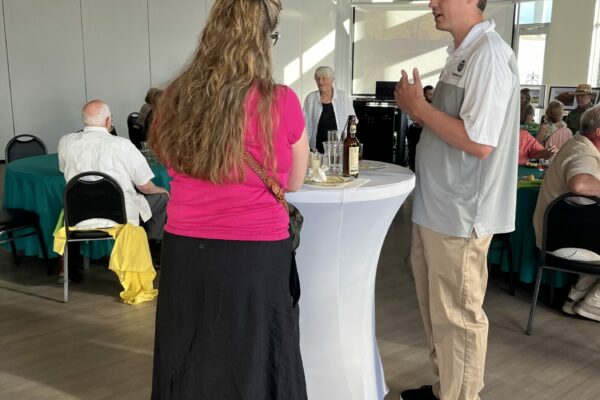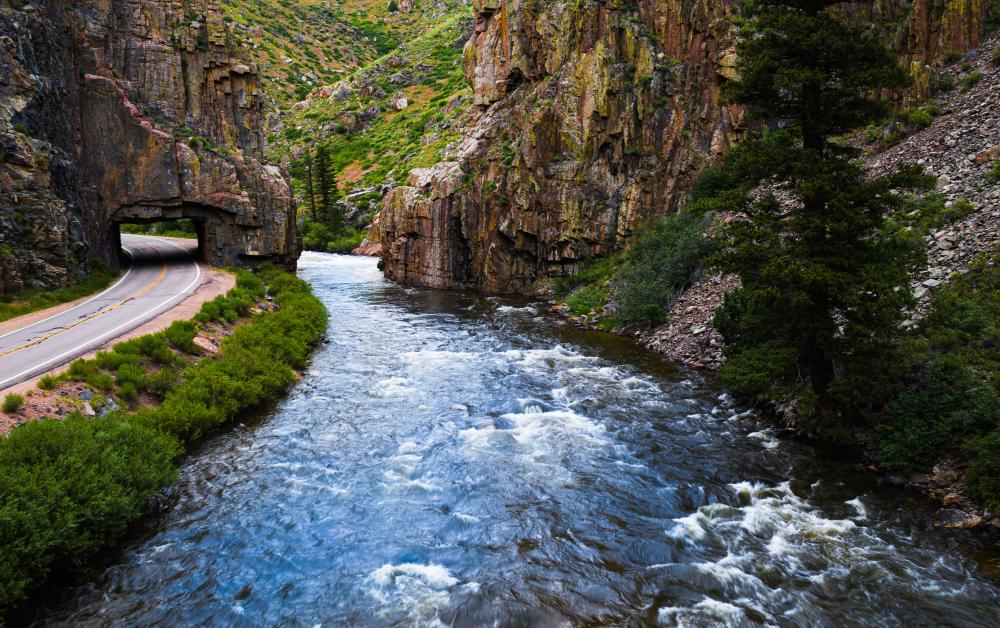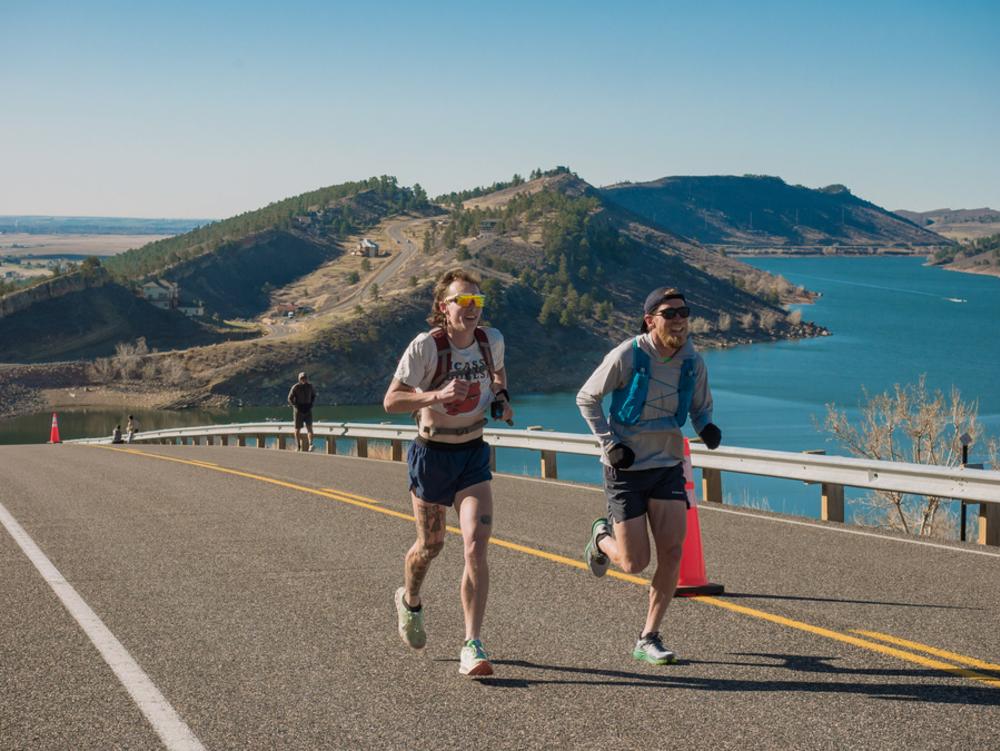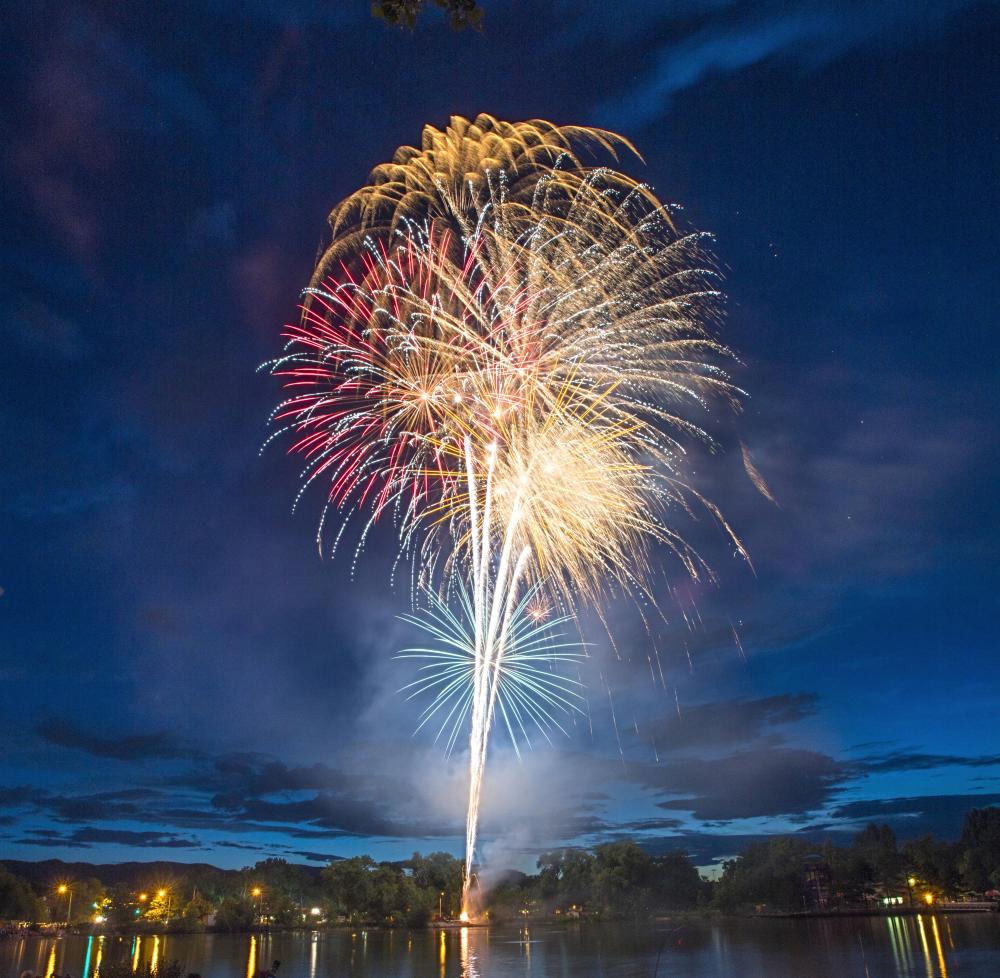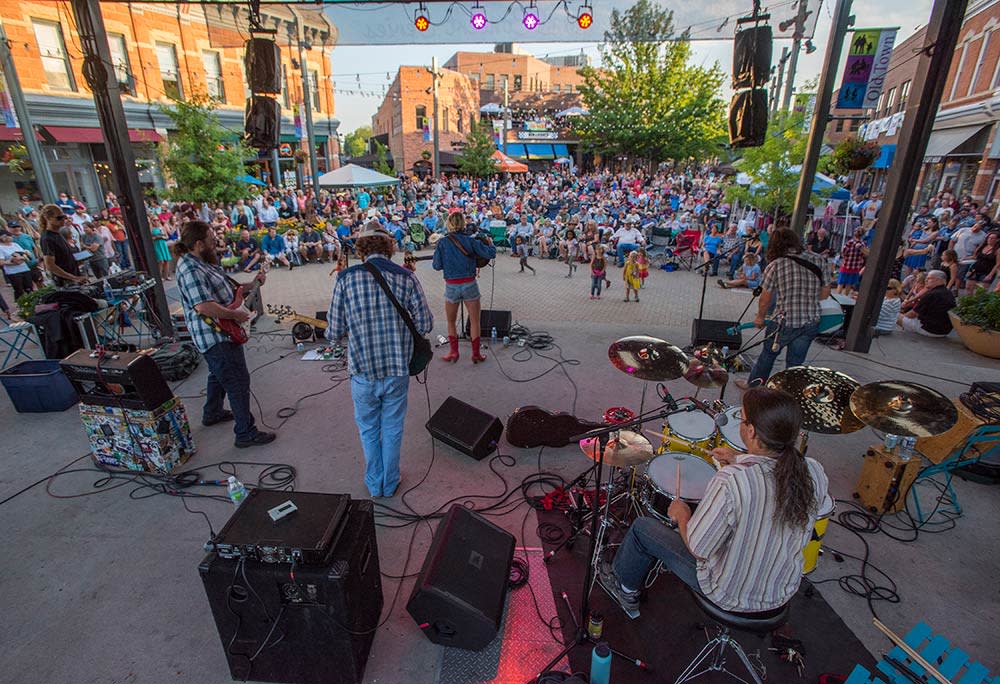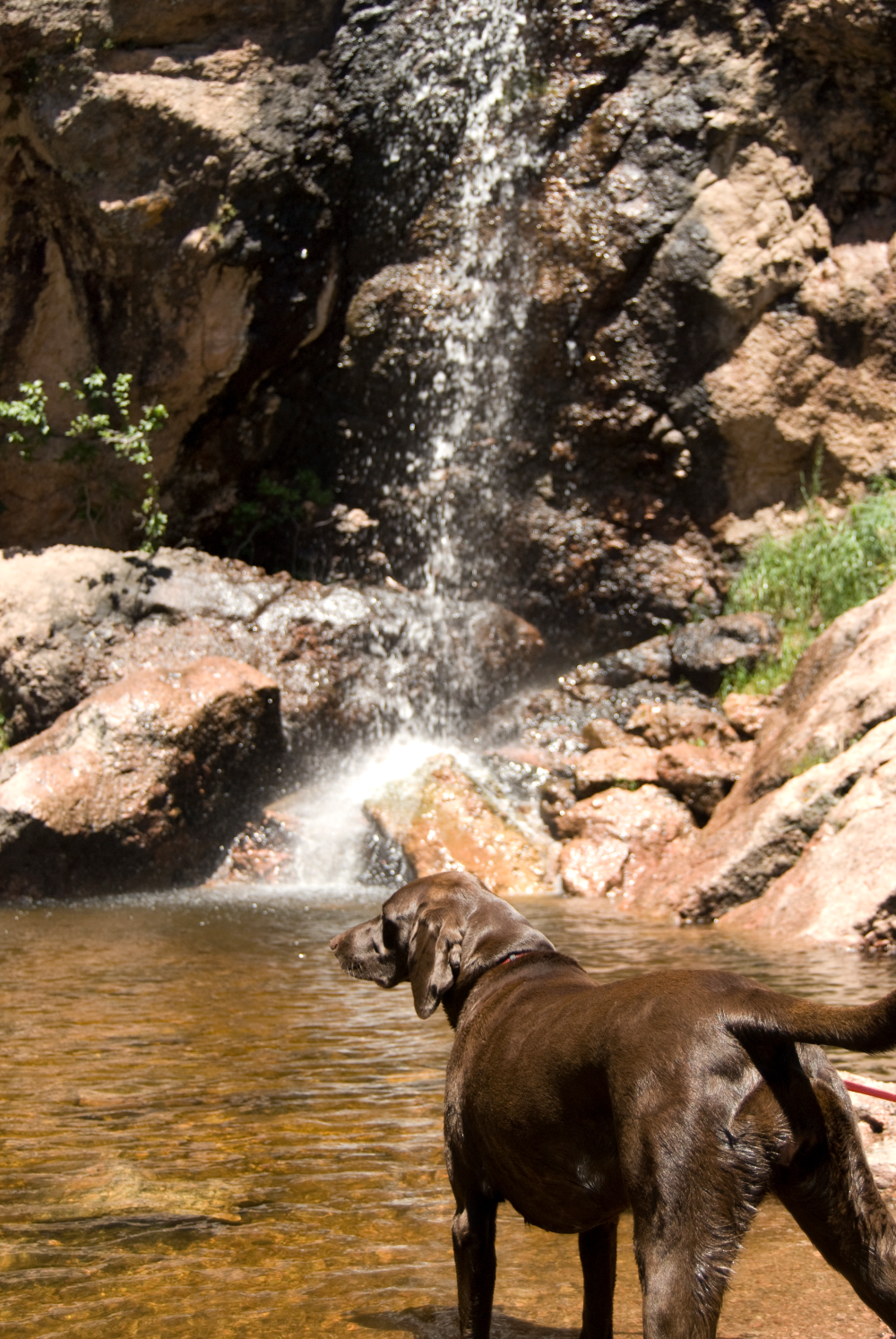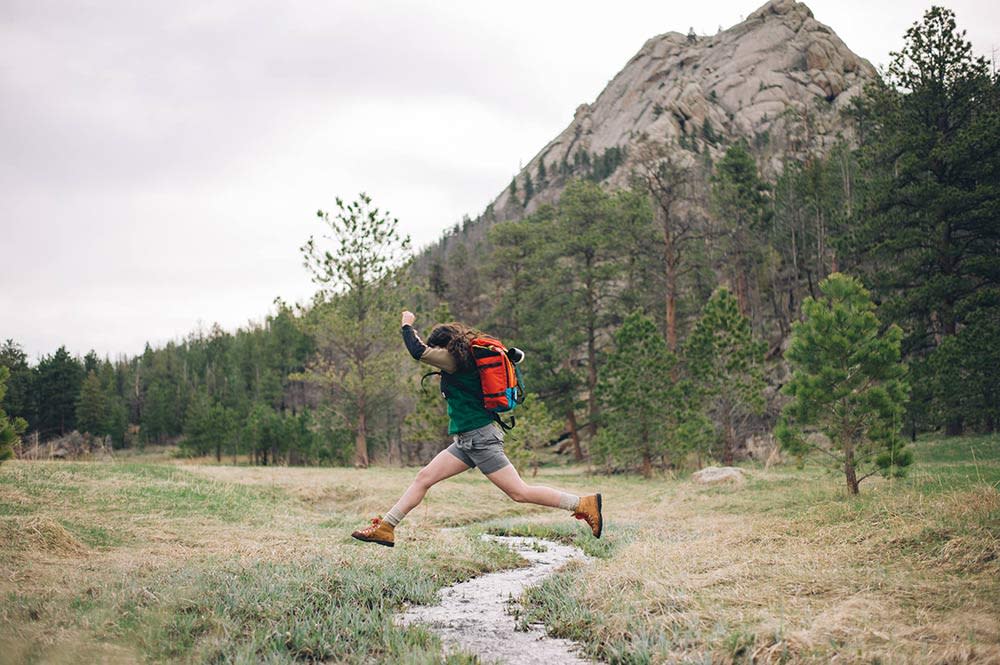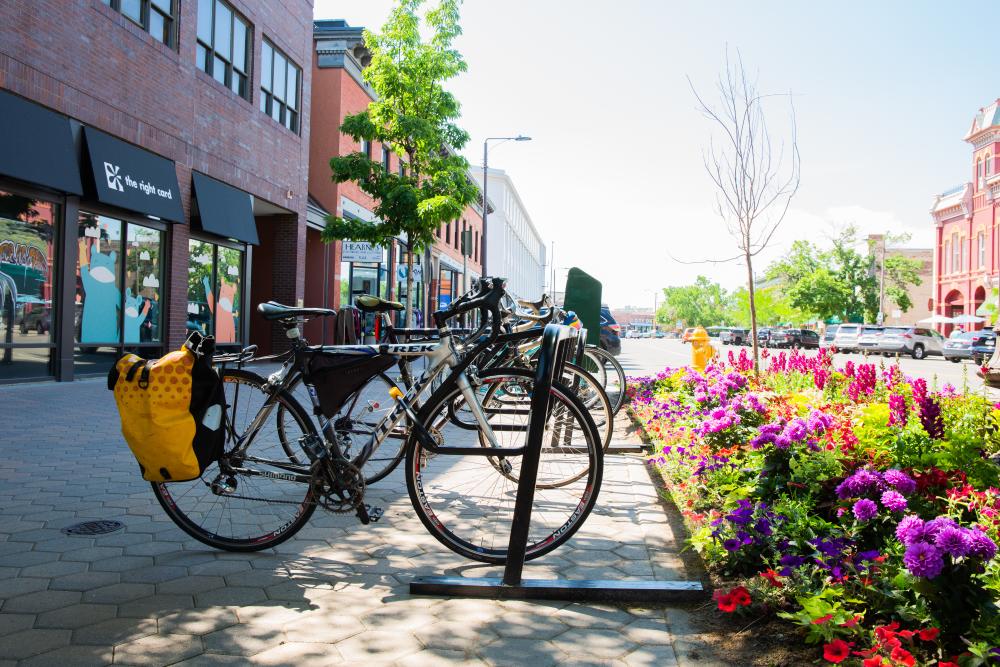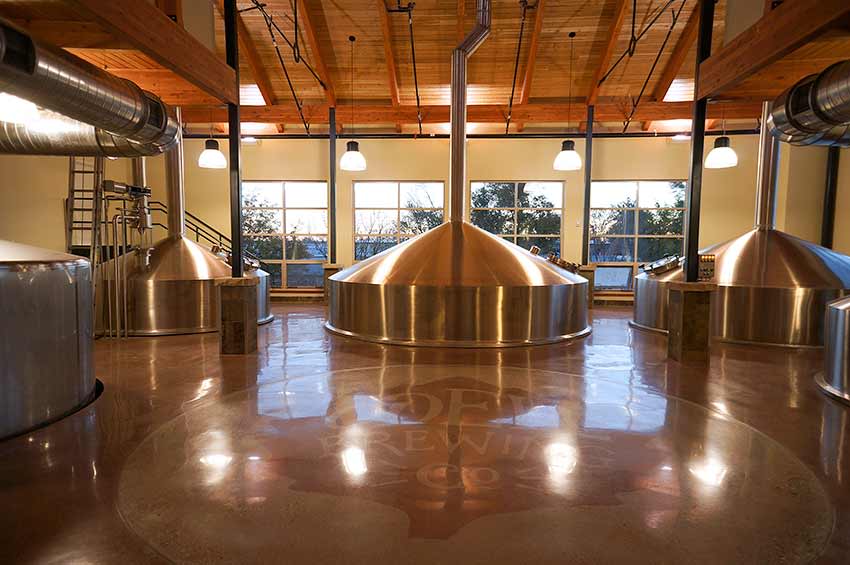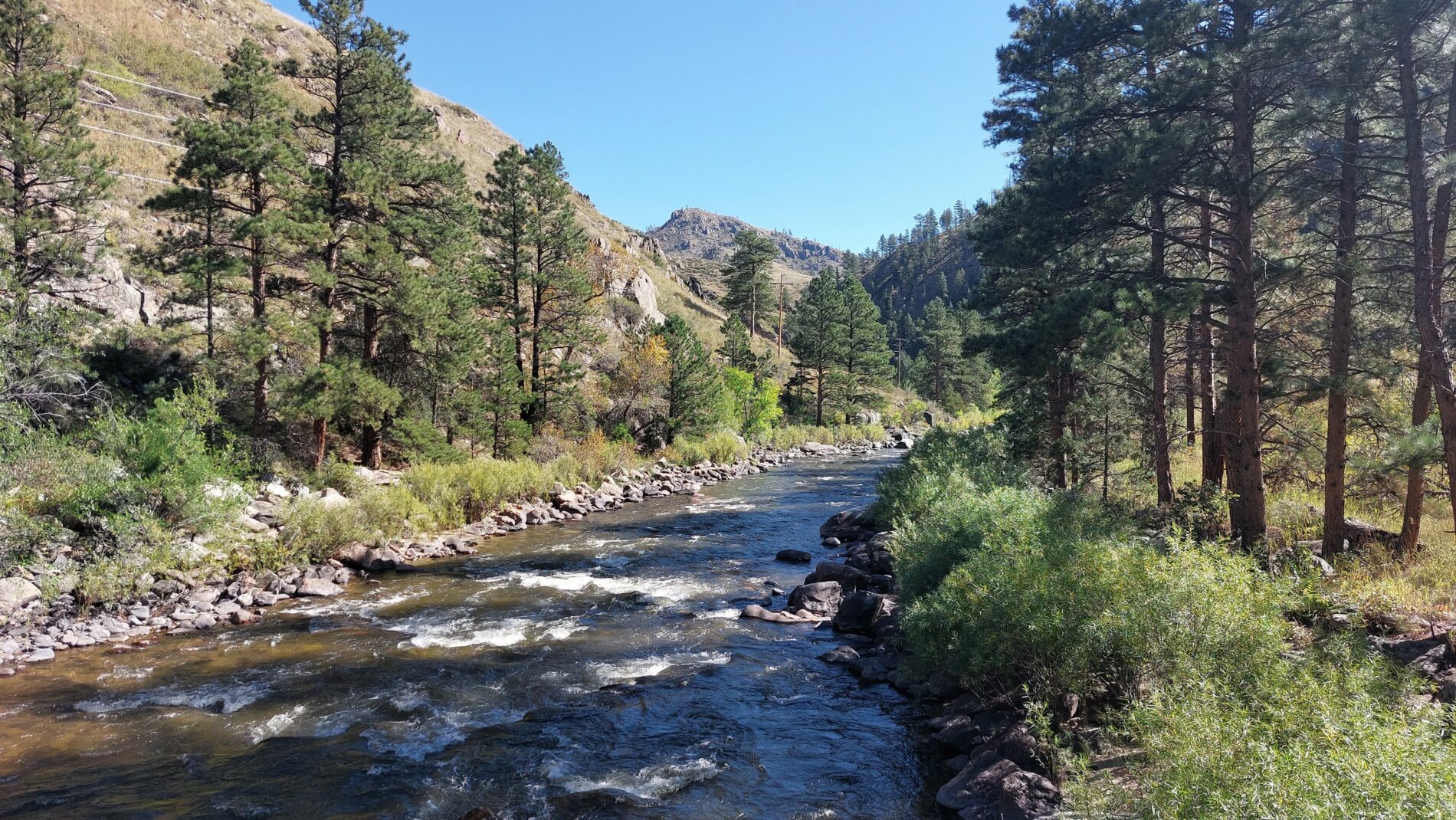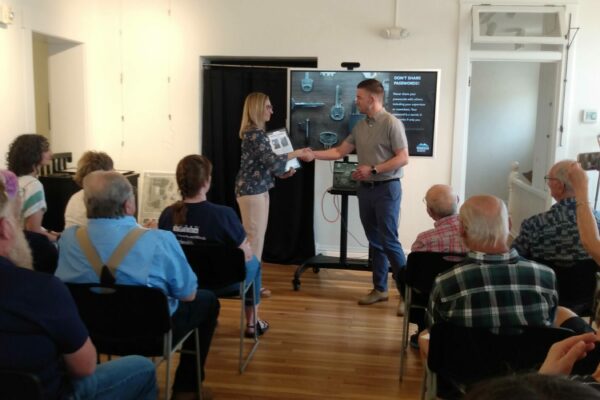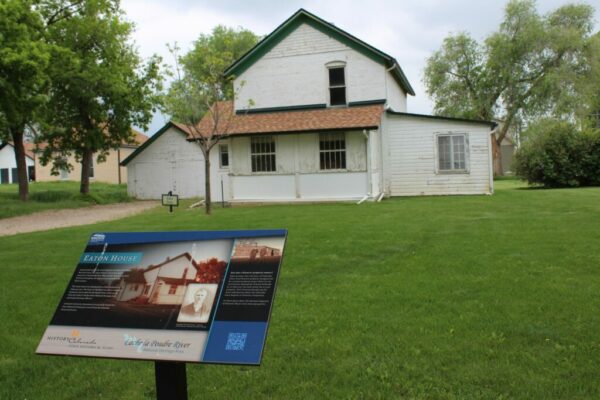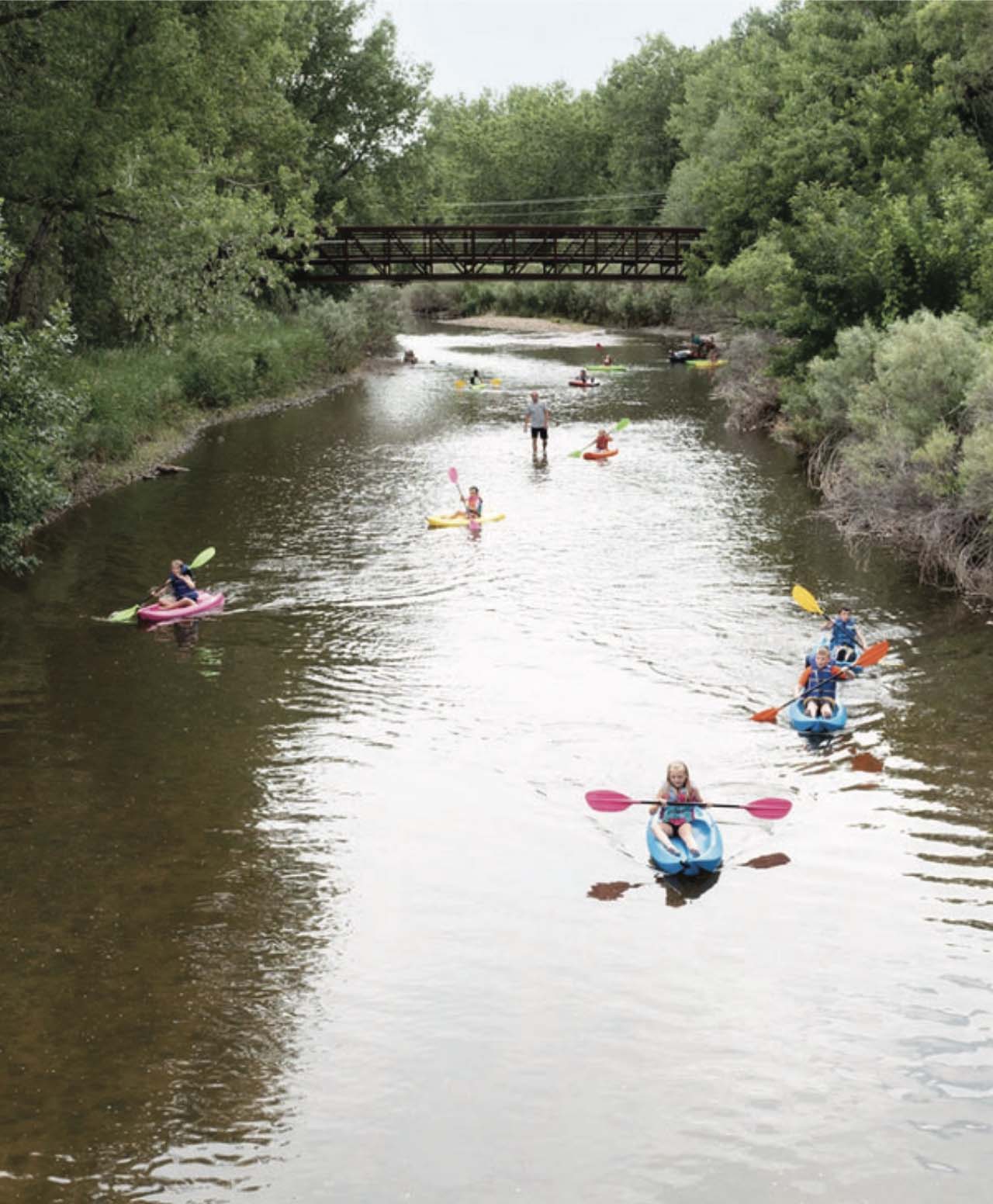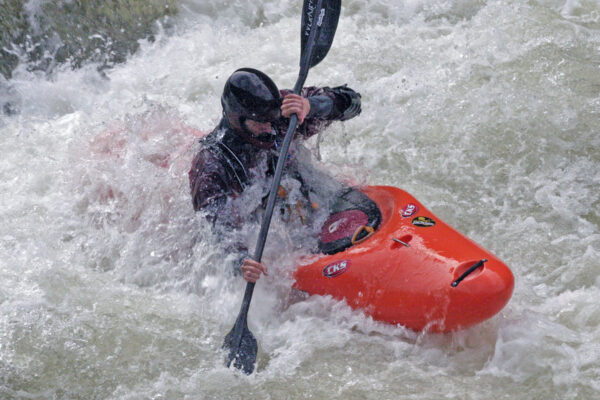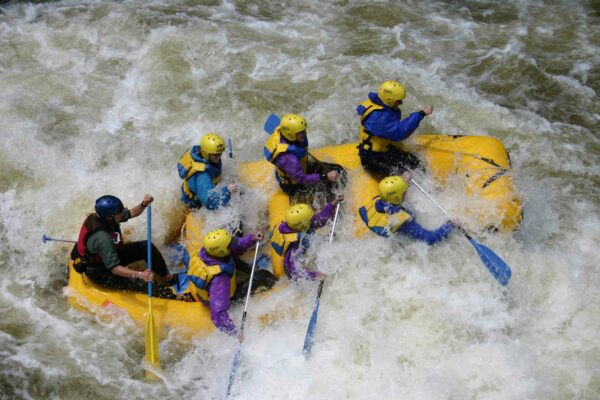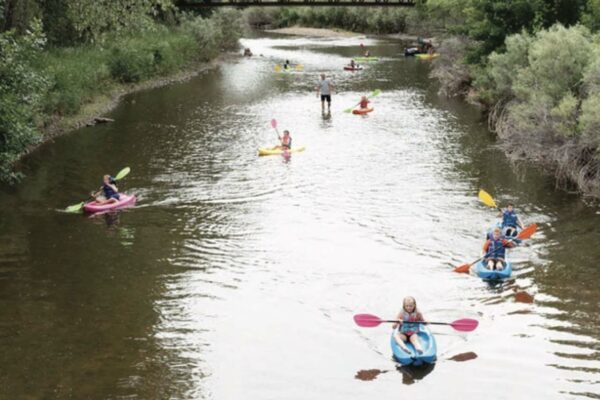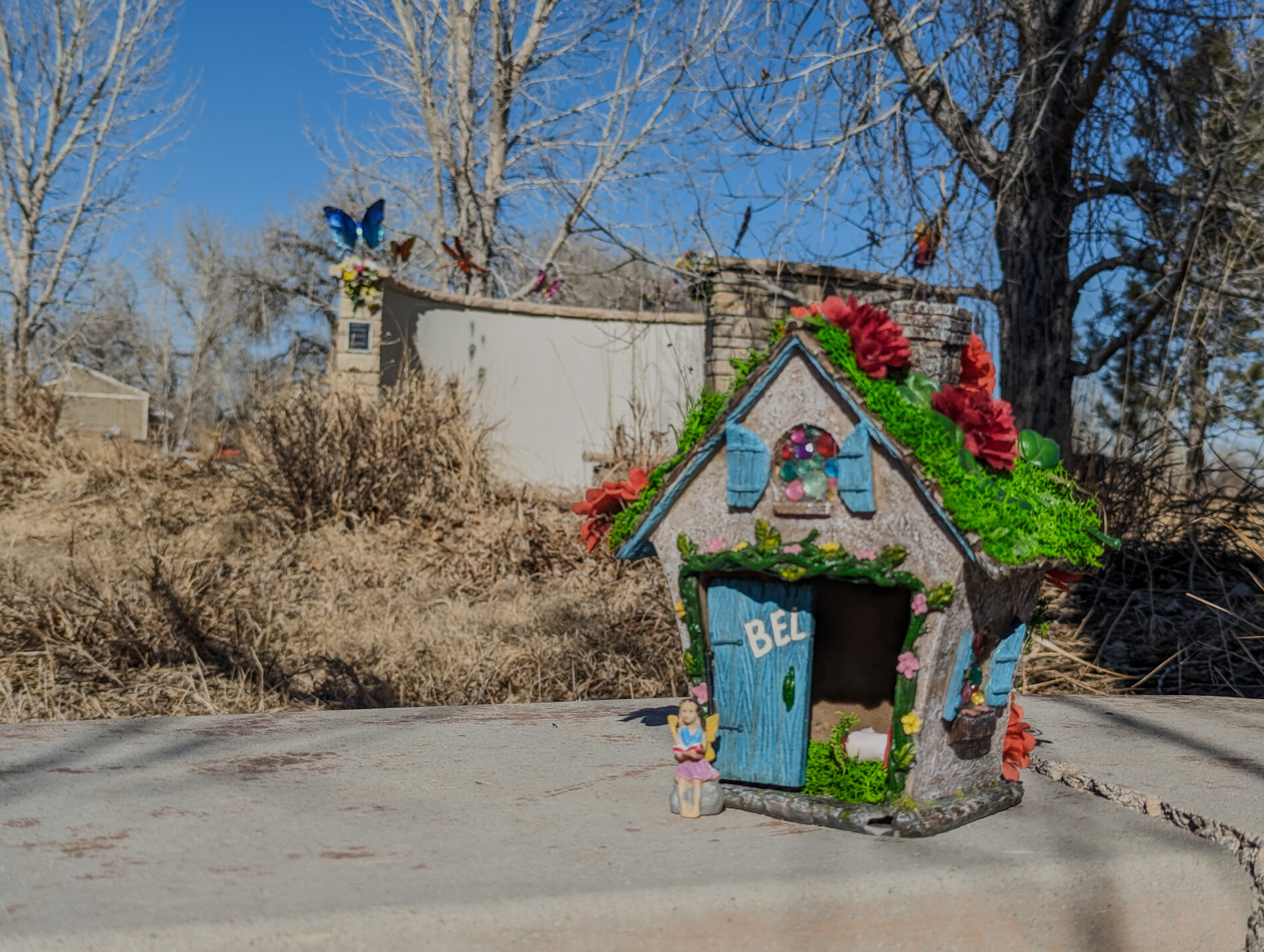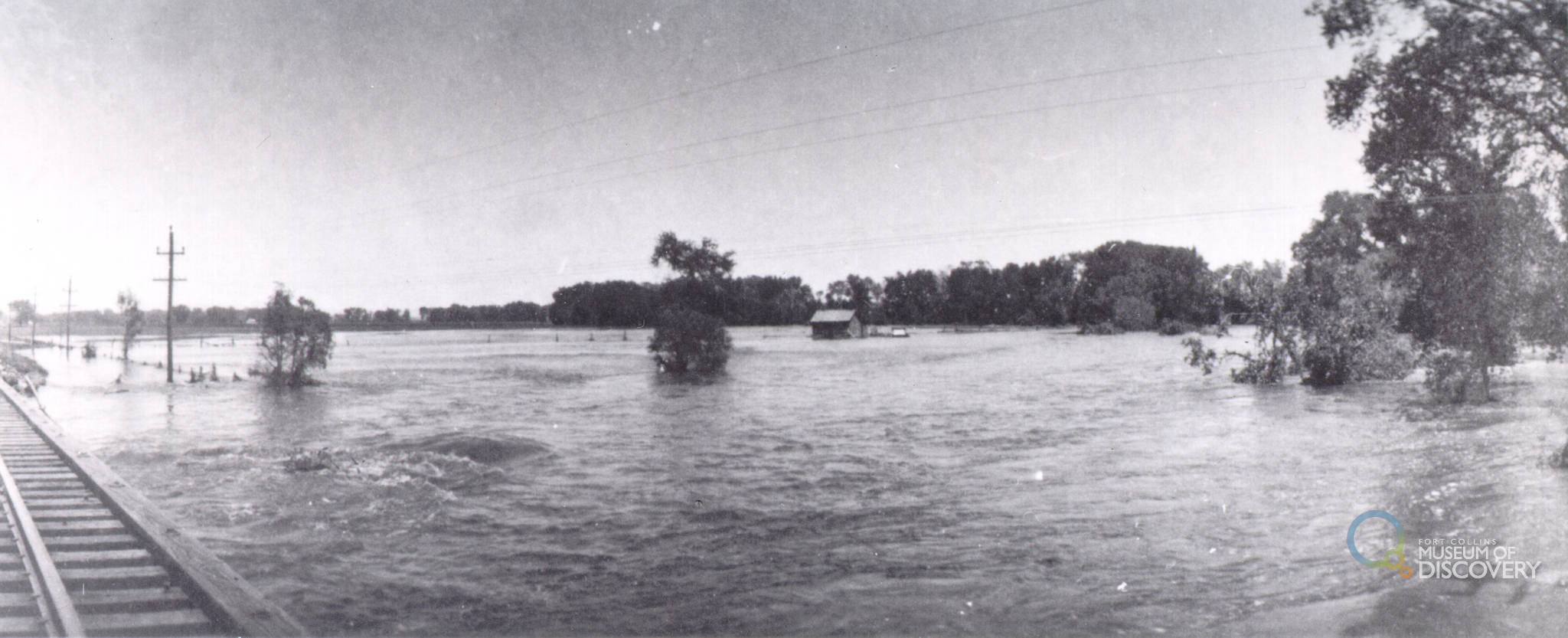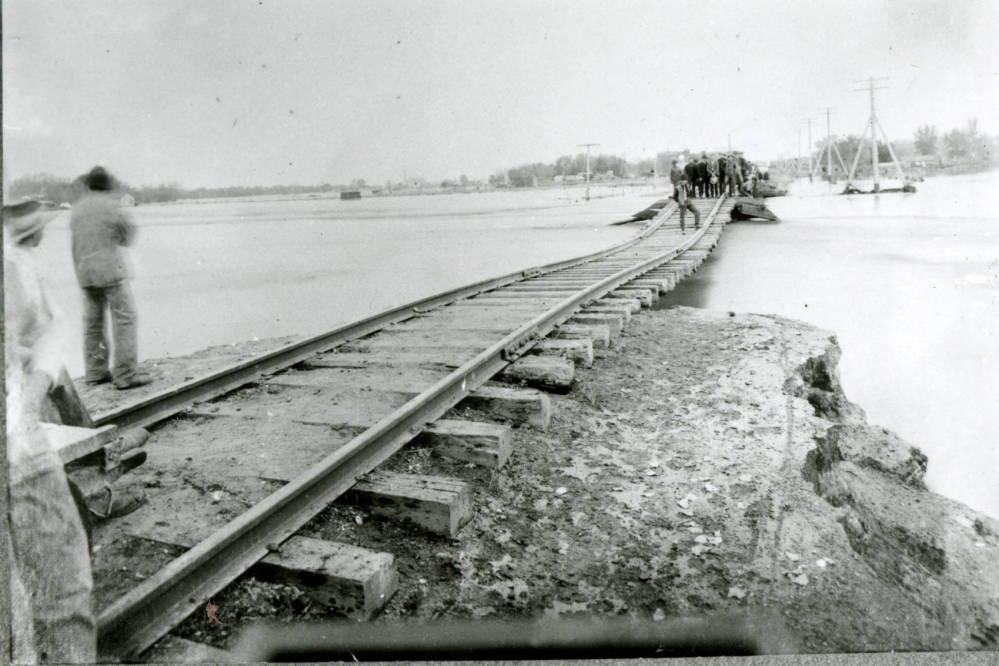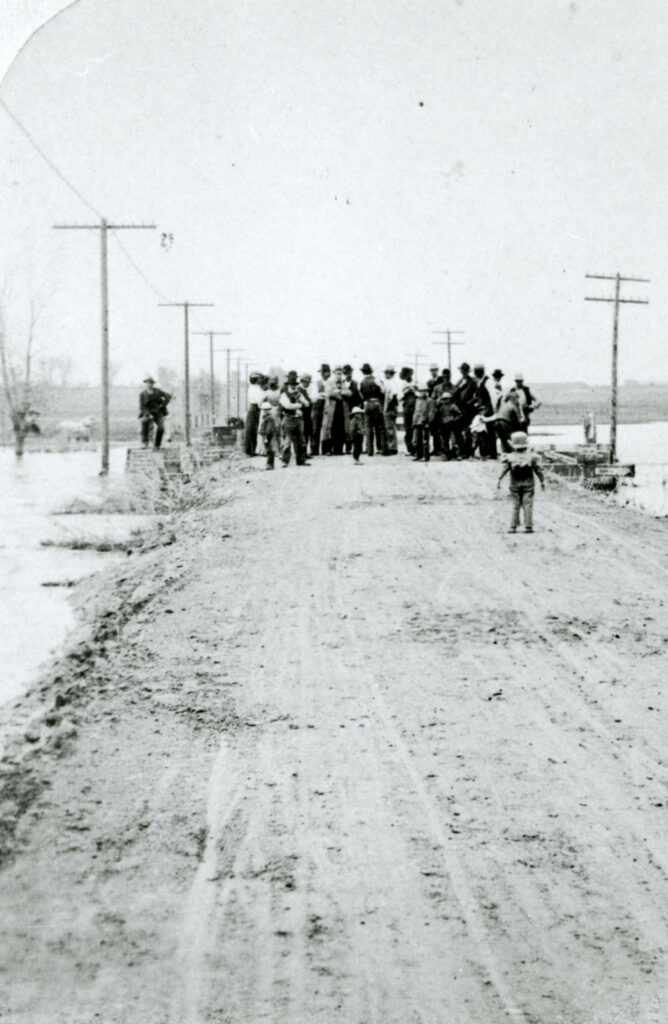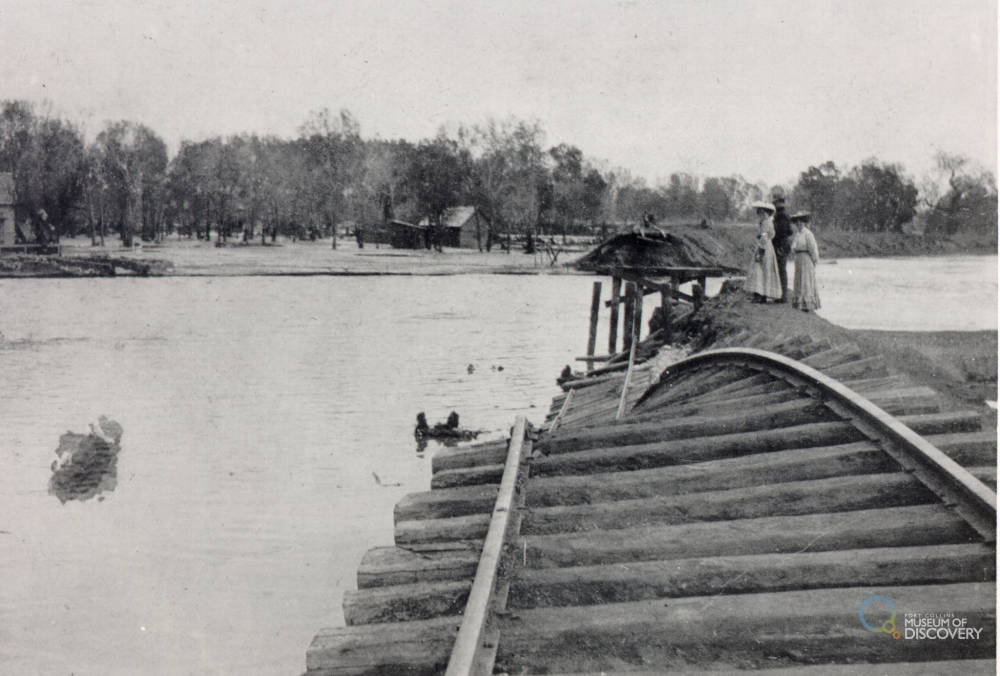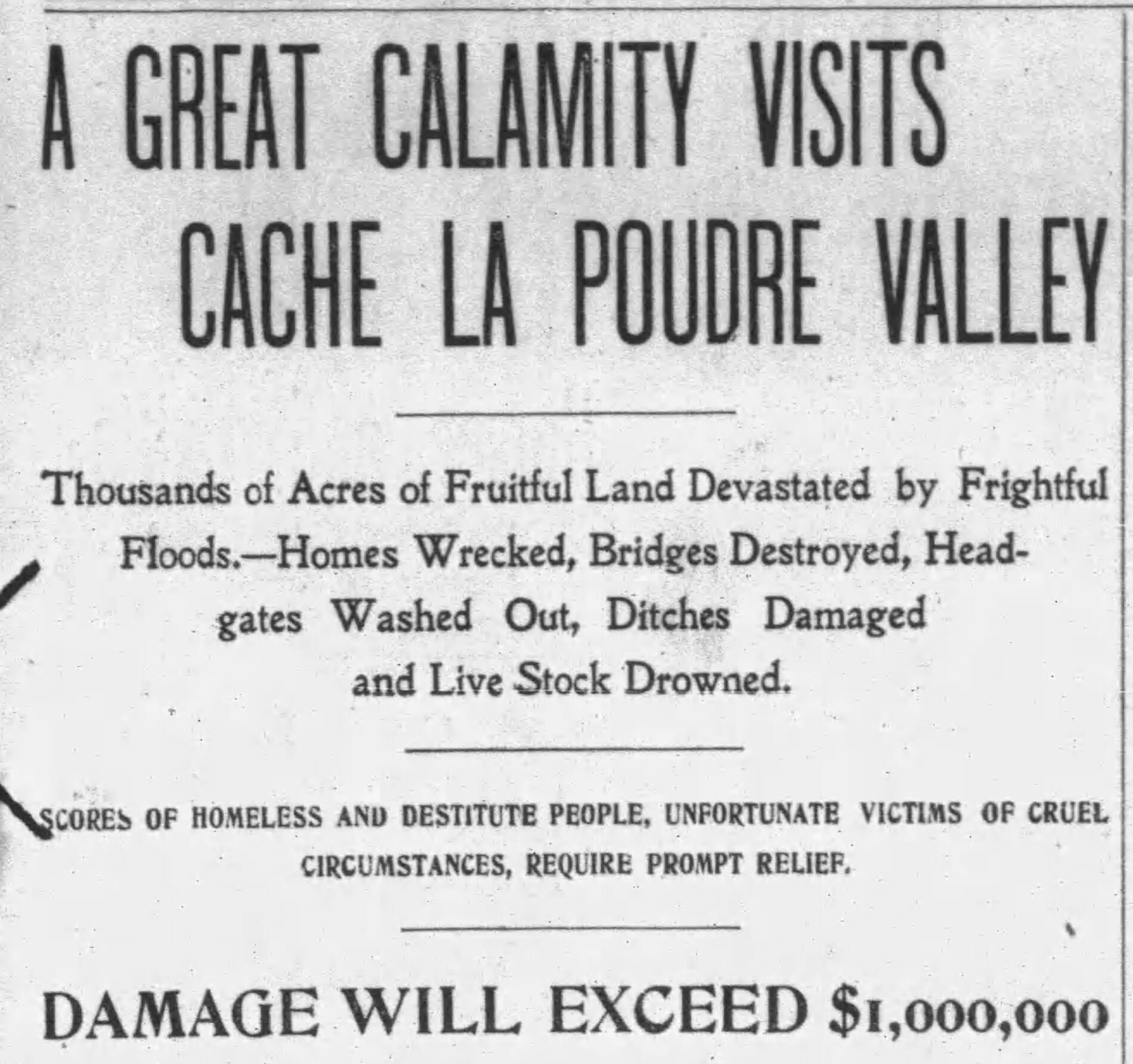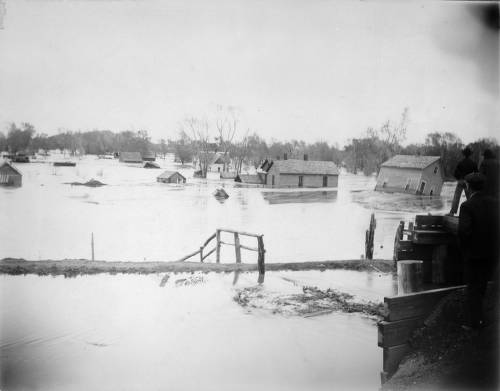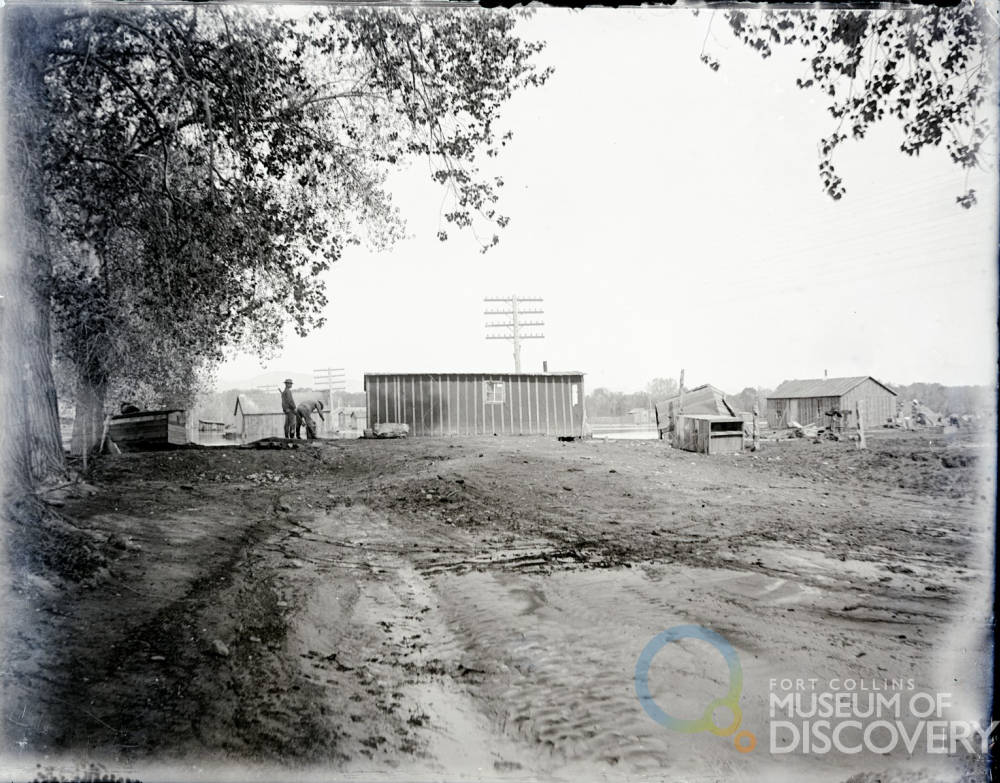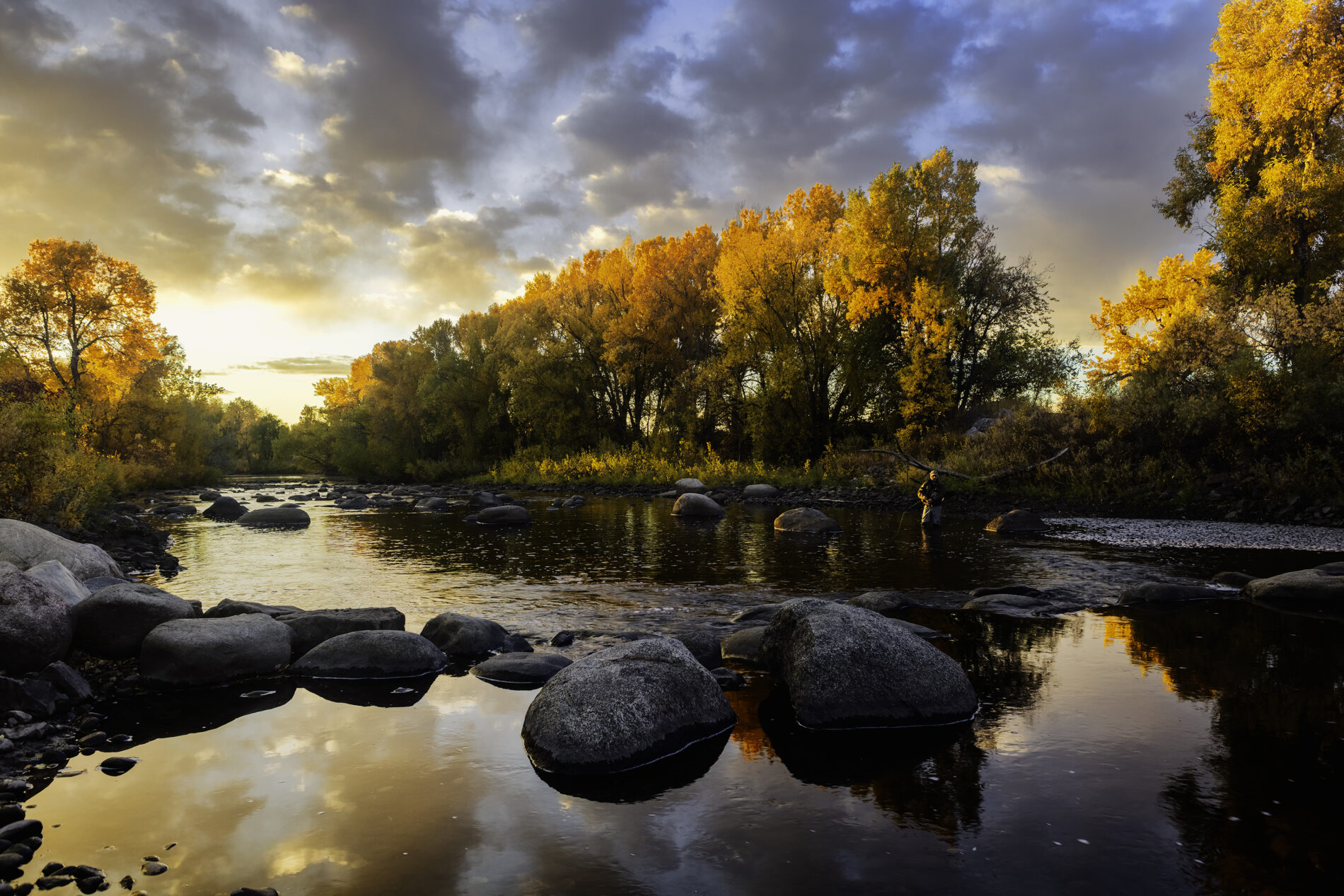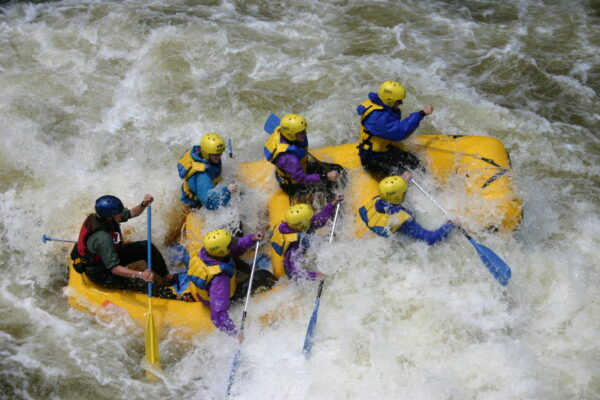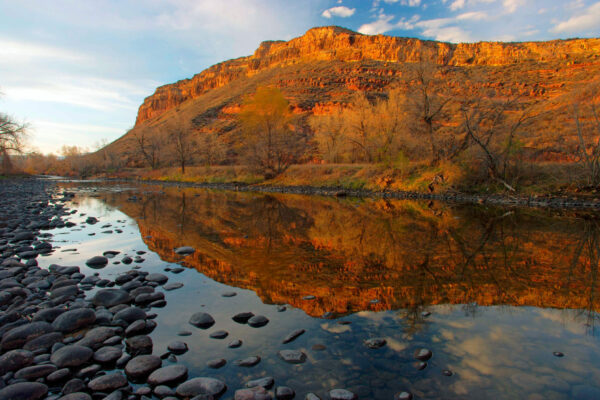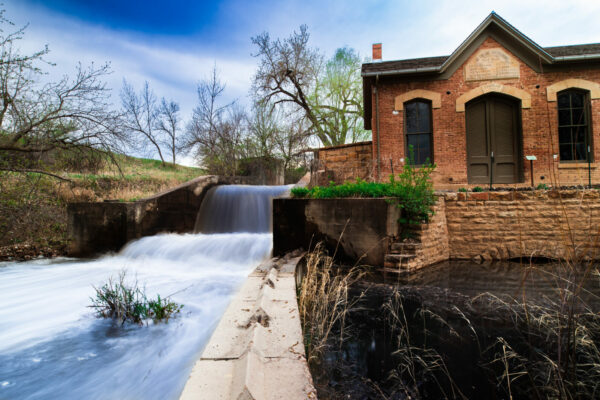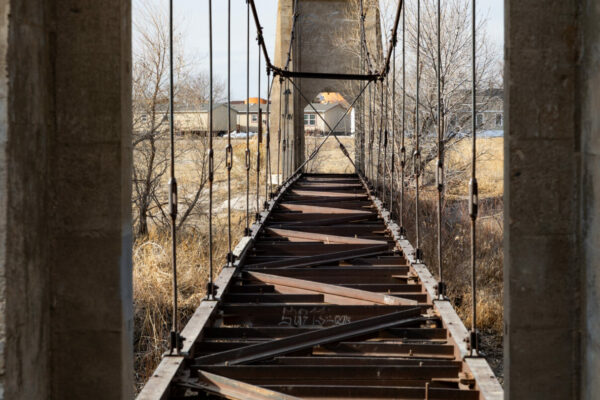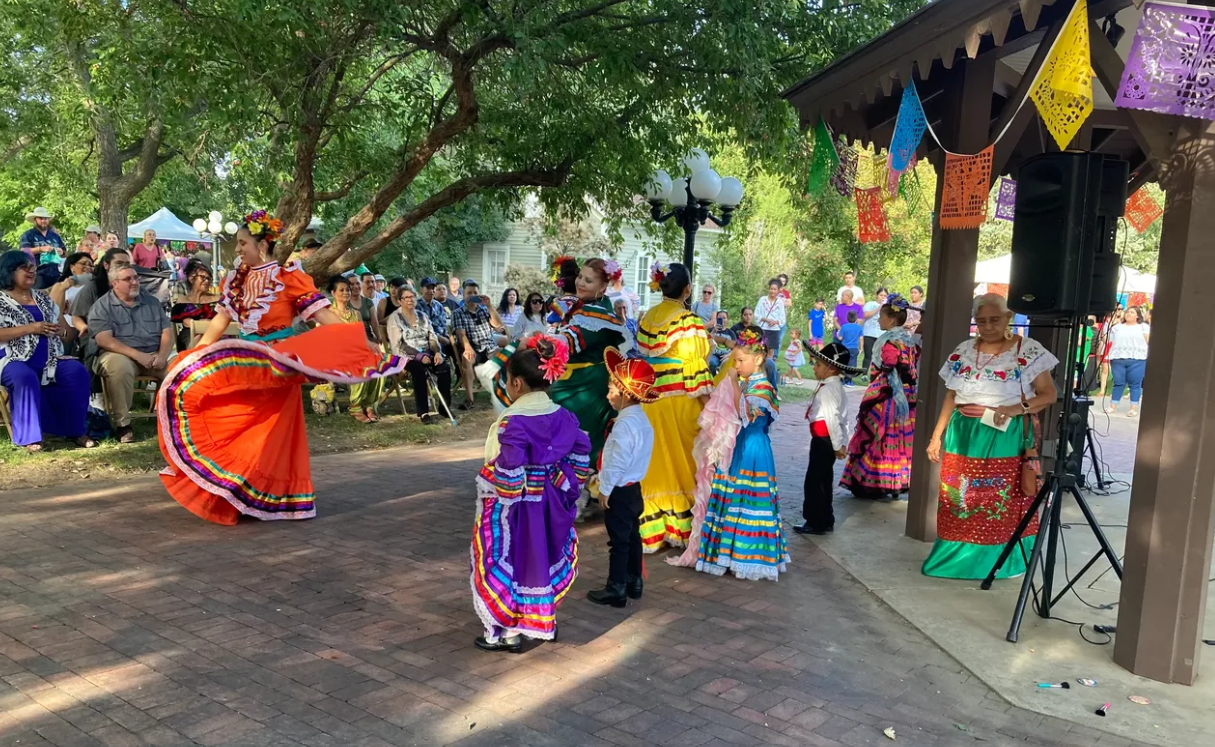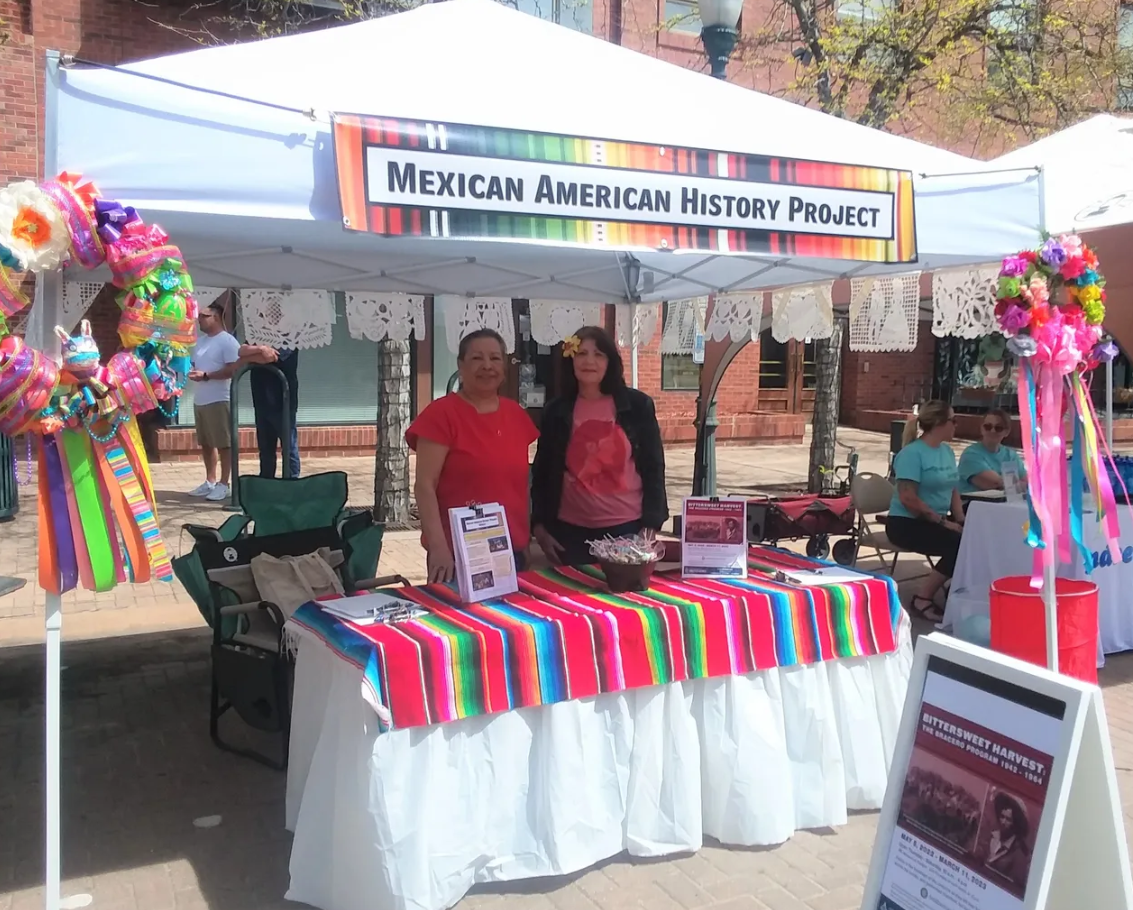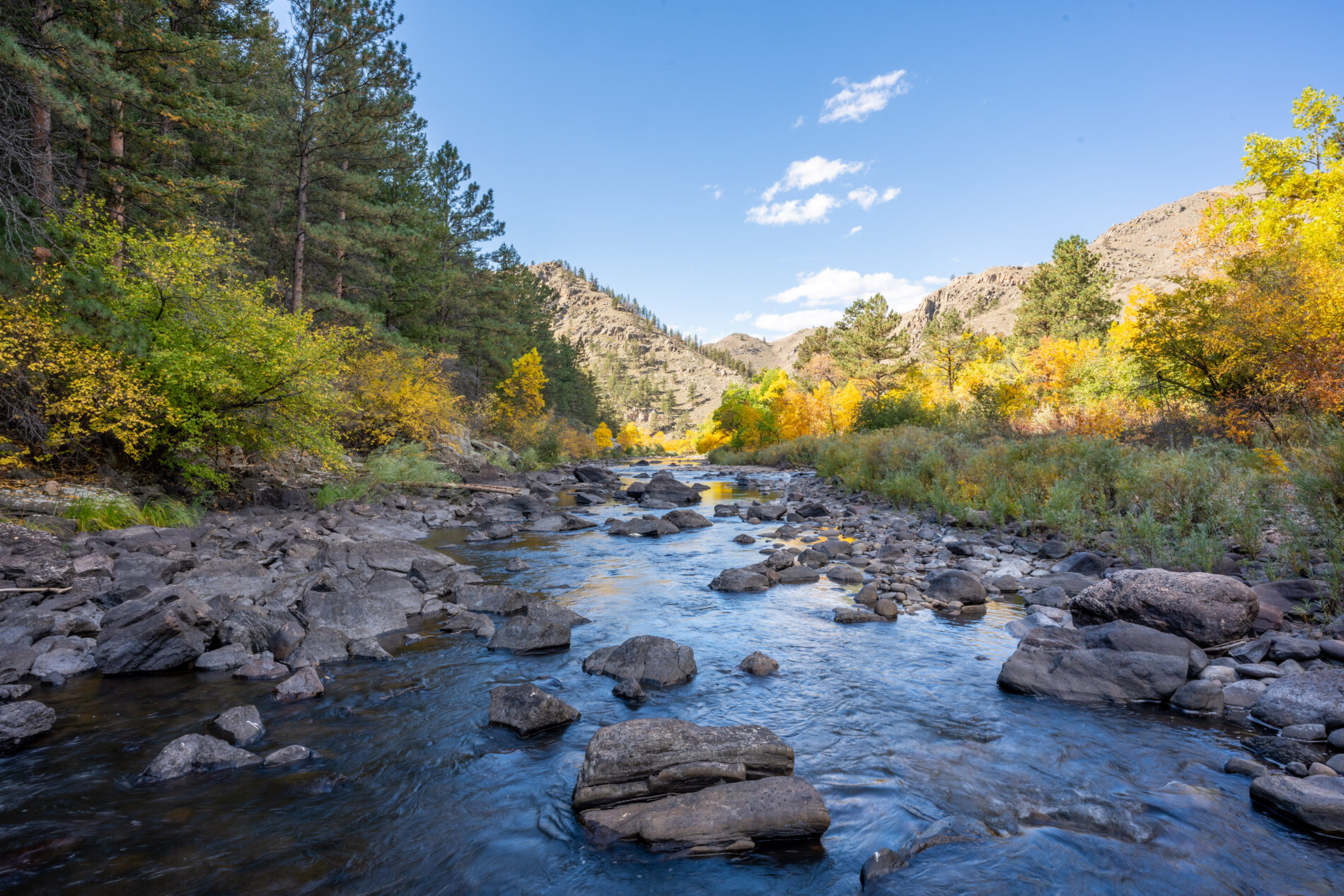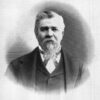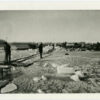
On Thursday, June 20, the Cache la Poudre River National Heritage Area hosted Cache & Cocktails, an evening dedicated to art, culture, and community. The event was held from 6:00 pm to 9:00 pm at Windsong Estate Event Center in Severance, CO.
Capture the Cache photo contest winners and participants were recognized during a celebratory evening of signature cocktails, hors d’oeuvers, and camaraderie. Cache NHA emeritus inductees were also honored for their service to the heritage area. A gallery of images were on display in a silent auction, available for purchase. There were gift baskets correlated to our photo contest categories (History Along the River Corridor, Outdoor Community Culture, and In Motion) auctioned off too. Thank you to the local businesses who supported the silent auction: Visit Fort Collins, Poudre Pet & Feed, Silver Grill, Old Firehouse Books, and Blue Credit Union.
Plein air artists, Kim Stenson and Laura Young, from the Thompson Valley Art League took to the outdoor patio for their incredible watercolor painting demonstration. They were joined by photo contest participant, Nicholas Fischer. All three paintings were auctioned off at the end of the night.
“It was lovely to meet other creative, nature-minded folks,” said Young. “What a cool event.”
Capture the Cache Winners
The annual Capture the Cache photo contest celebrates the natural beauty, culture, and heritage of the Cache la Poudre River National Heritage Area. Winning images offer a snapshot of what makes the heritage area unique and important. View the full 2024 participant gallery here.
History Along the River Corridor
Outdoor Community Culture
In Motion
Emeritus Honorees
During the event, emeriti were recognized and honored for their services to heritage area. Emeriti are individuals who have served the Poudre Heritage Alliance, the nonprofit managing entity of the Cache NHA, and the heritage area with distinction, excellence, and outstanding service. The unveiling of the new perpetual plaque marks the legacy of the outstanding service of each emeritus member. Two of the individuals named on the plaque were in attendance: Dick Maxfield and Brian Werner.
“The plaque will be on permanent display in our office,” said Executive Director, Sabrina Stoker. “On behalf of the Poudre Heritage Alliance, we express our most sincere gratitude to your service and continued support.”
The evening’s honoree, Brian Werner, testified before Congress in 1995 in support of the S. 342 the Cache la Poudre River National Water Heritage Area. His testimony was a crucial step in securing designation for the Cache la Poudre River National Heritage Area. Werner was an original appointee to the Poudre Heritage Alliance Board from 2001 to 2016.
”"As a founding member of what became the Cache la Poudre River National Heritage Area, I have a true soft spot for everything Cache NHA is about and am truly honored to be receiving the Emeritus Award. The Poudre River is such a wonderful natural resource and a real lifeline for the region. We should celebrate all this river is about."
Brian Werner
